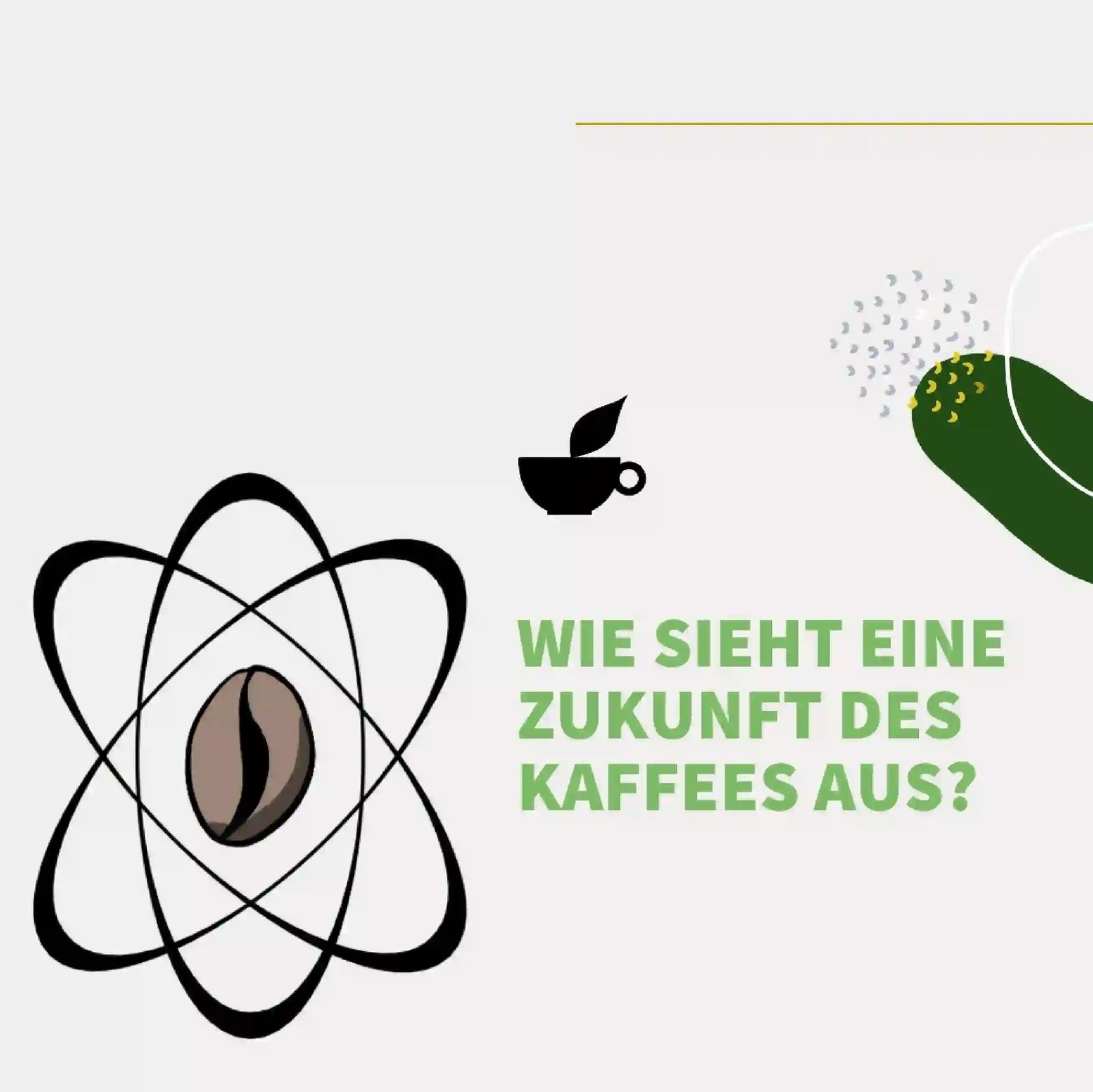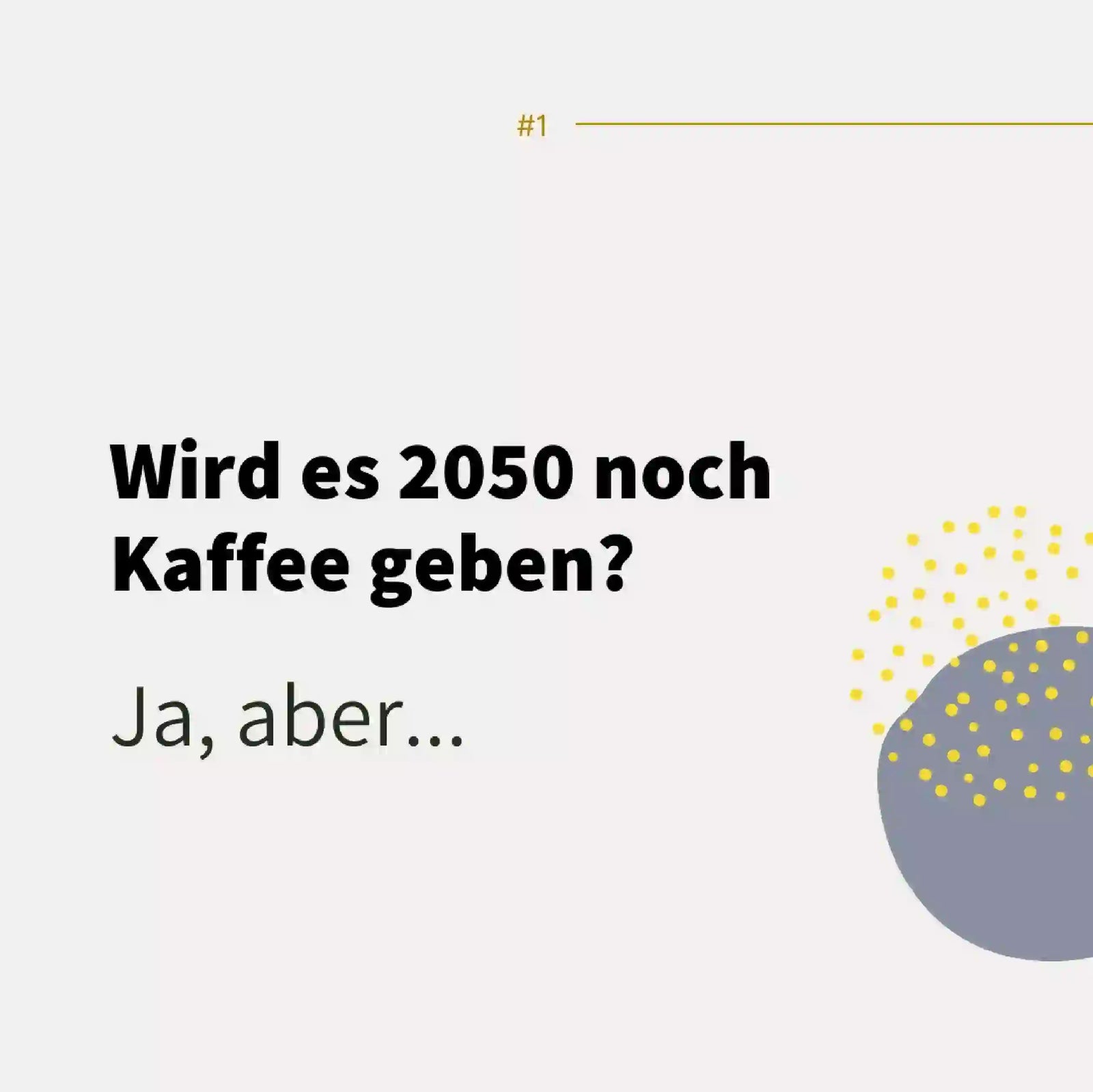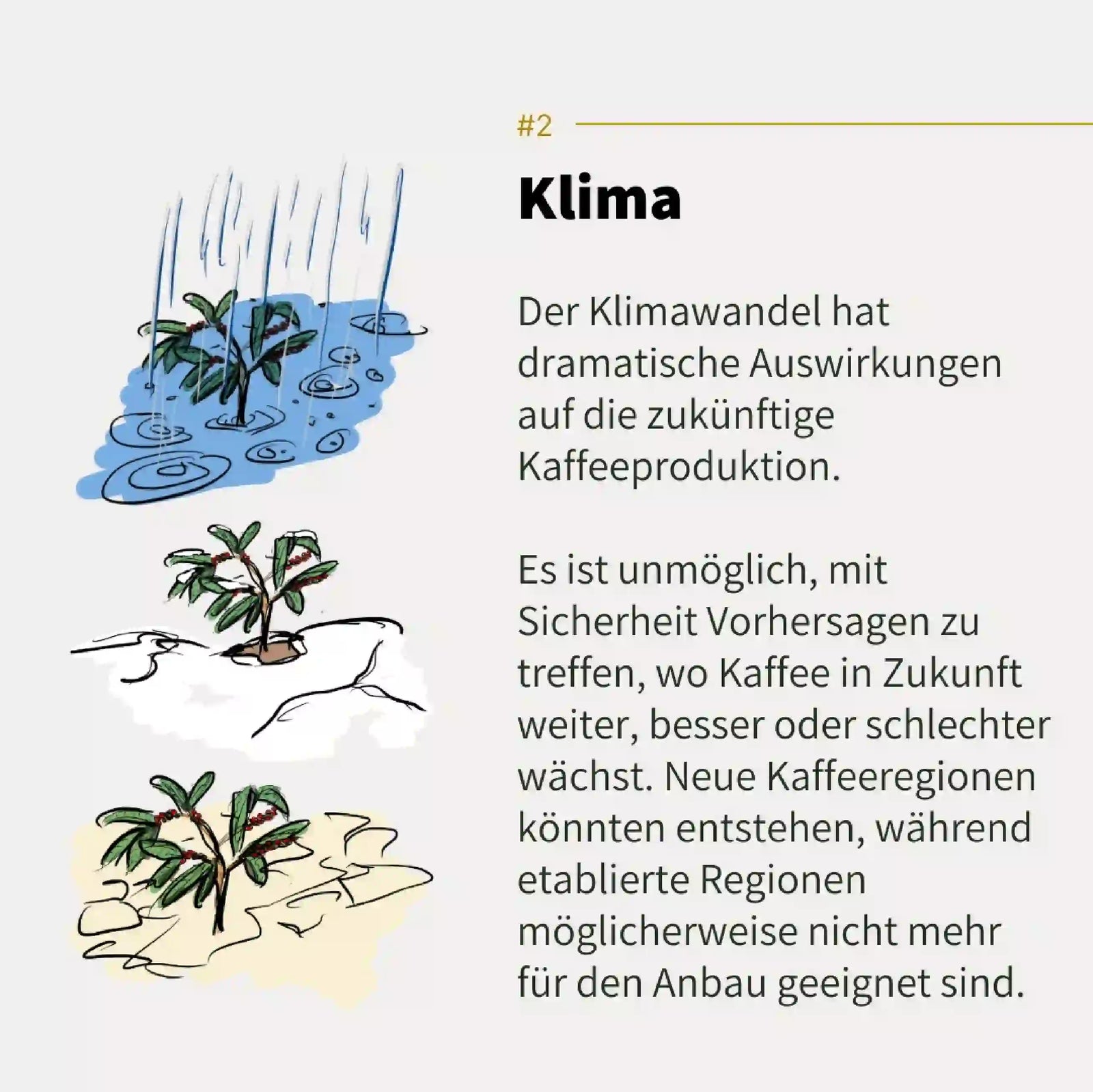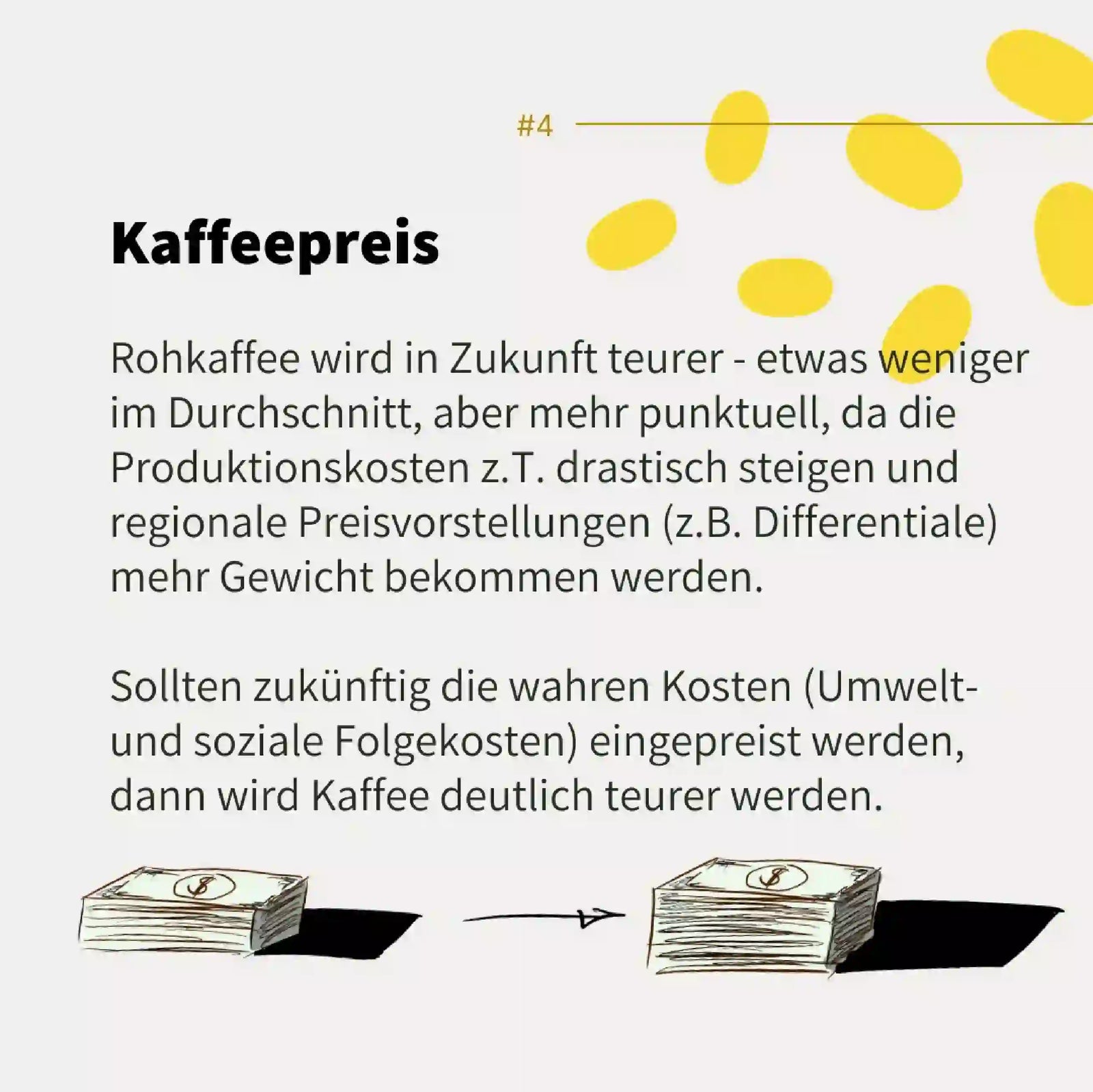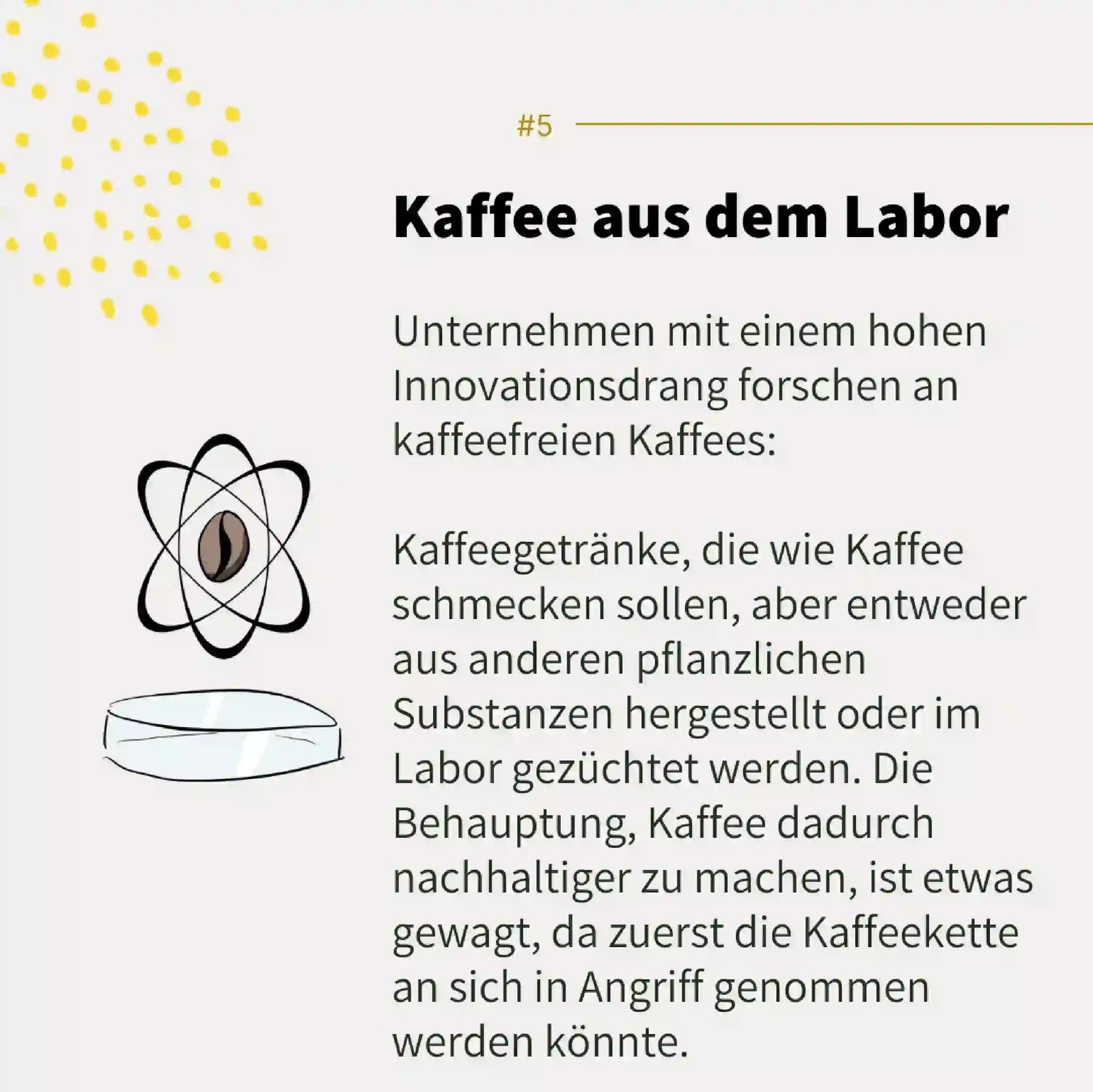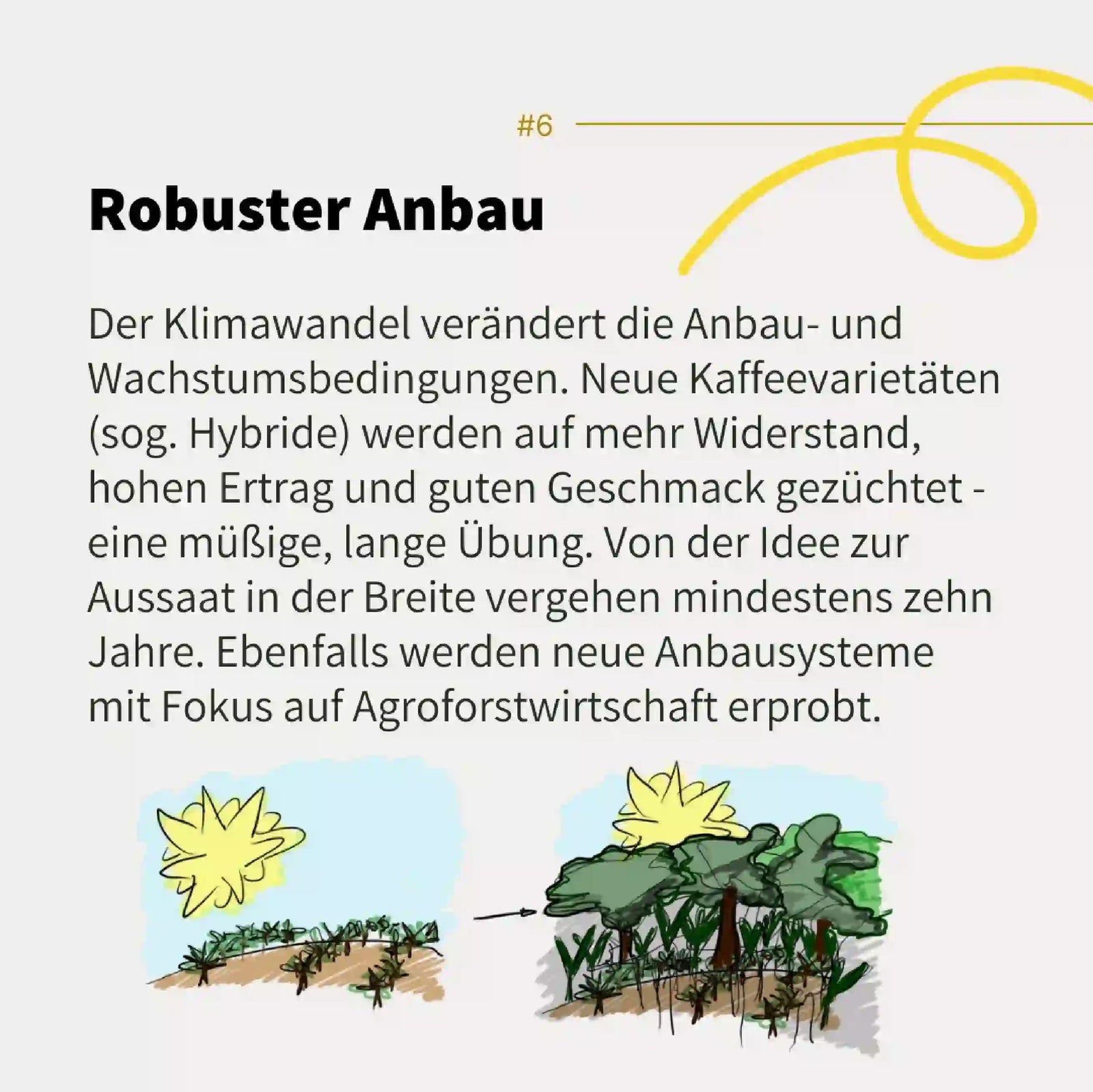Emissions naturally arise in the coffee supply chain. We wanted to better understand where, how, and why they occur. We analyzed, calculated, and contextualized them. Based on our own farm in Nicaragua, we established a calculation method that we can now apply to all our coffee supply chains.
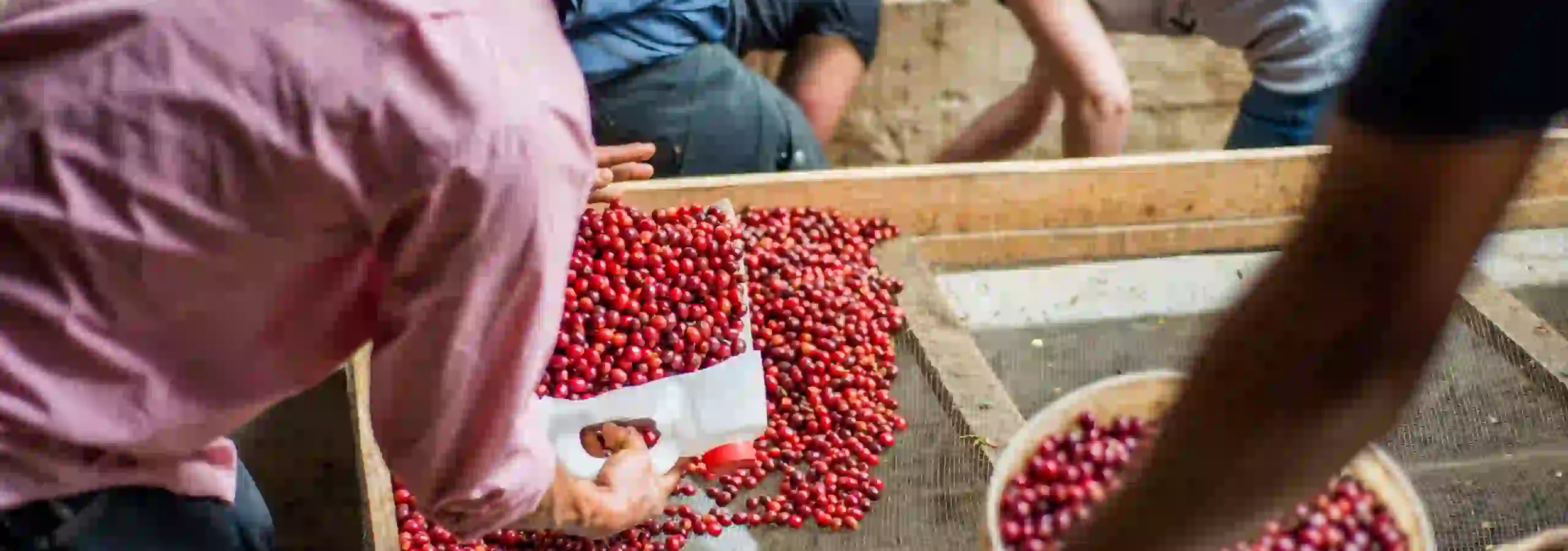
From the tree to the cup
Now we know exactly how many emissions occur throughout the entire coffee chain
This knowledge now helps us, together with our partners, to think about specific solutions and implement them in projects.
In Brazil, the Apas cooperative has switched to organic production; in Nicaragua, we will produce our own fertilizer; and in Mexico, we are working with our partners to ensure that agroforestry for small-scale producers has a positive impact on their household incomes.
Regarding the posts: In January 2024, we published this series of graphics on social media. The posts have a strong focus on CO₂, which represents "only" the global warming potential (GWP 100). A holistic approach must not ignore land-use change, water acidification, and, above all, social factors.
How do you measure emissions?
The Greenhouse Gas Protocol is the standard for measuring and accounting for greenhouse gas emissions, which we adhere to. This calculation is also called a life cycle assessment. As of January 2024, we have calculated the carbon footprint of our Santa Rita coffee for the 2021/22 harvest, the transport from Nicaragua to us in Basel, and the roastery emissions for 2022.
This is a cradle-to-gate analysis, meaning we consider all emissions that occur until the coffee leaves our roastery.
At roasteries, most emissions are in Scope 3. Scope 3 accounts for 95.8% of our emissions. This calculation is based only on Santa Rita coffee. Other coffees certainly have different carbon footprints. Our coffee selection therefore has the greatest impact on our emissions. However, other factors play a role in our selection. You can find out more here.
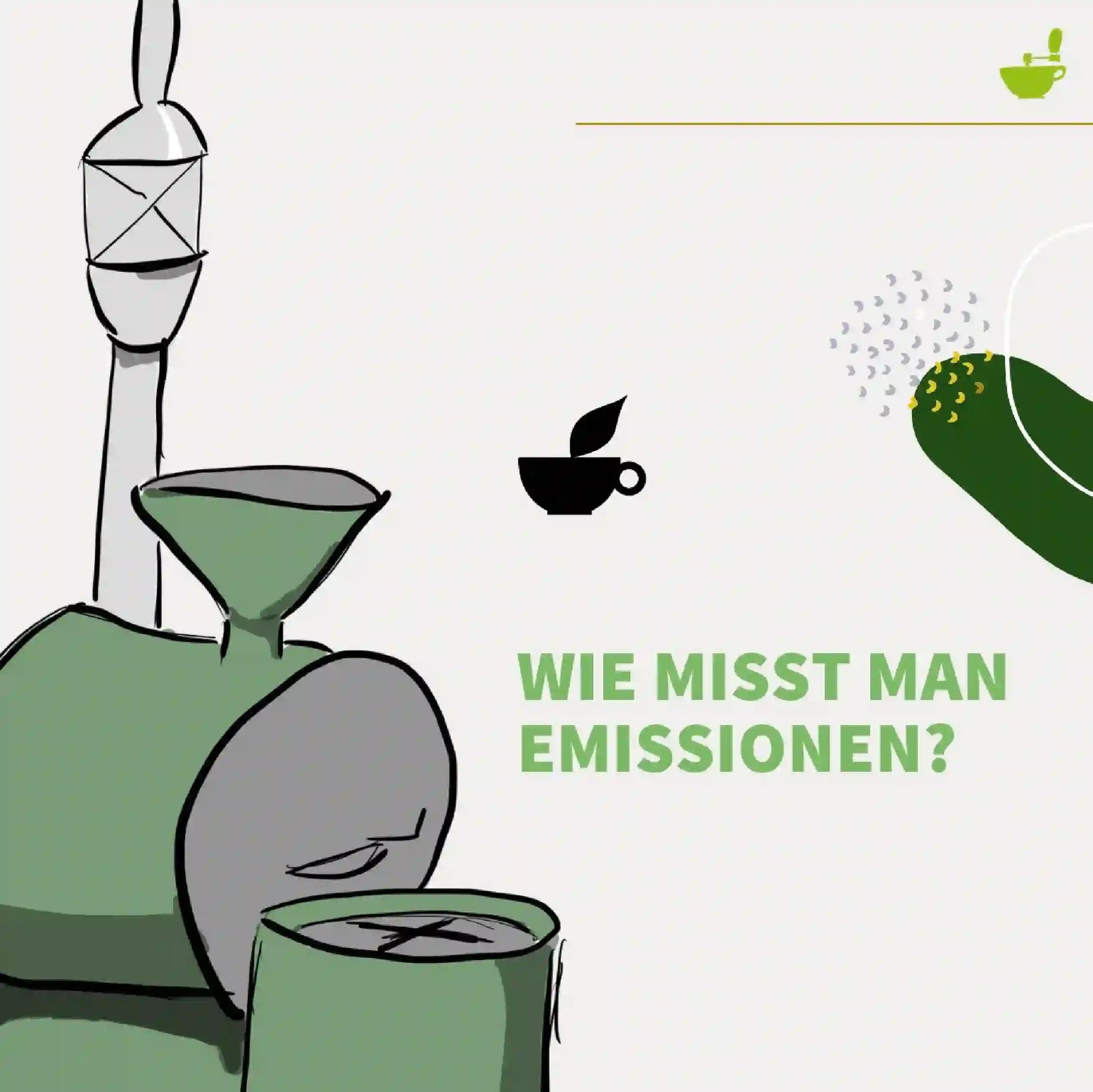

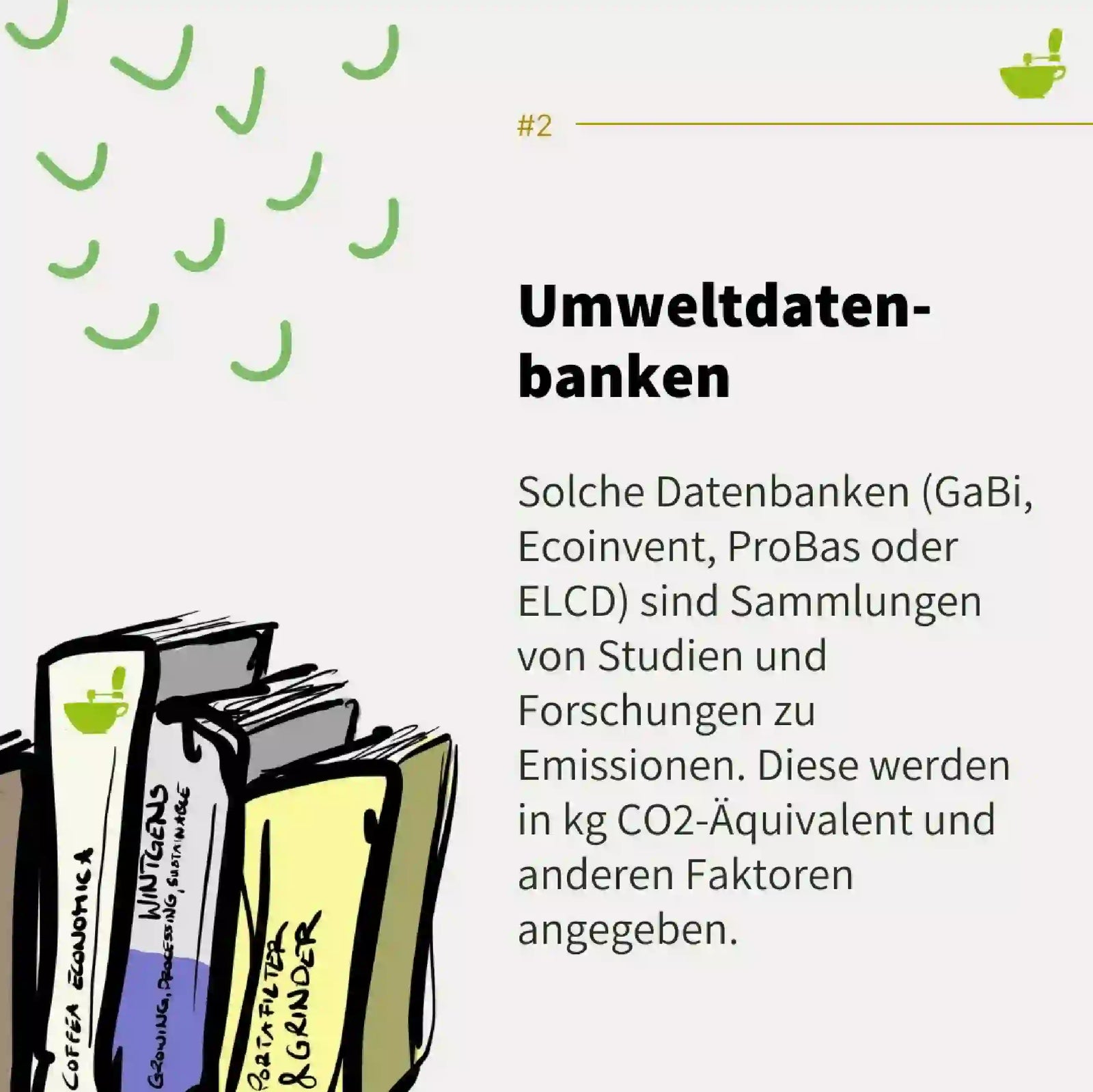
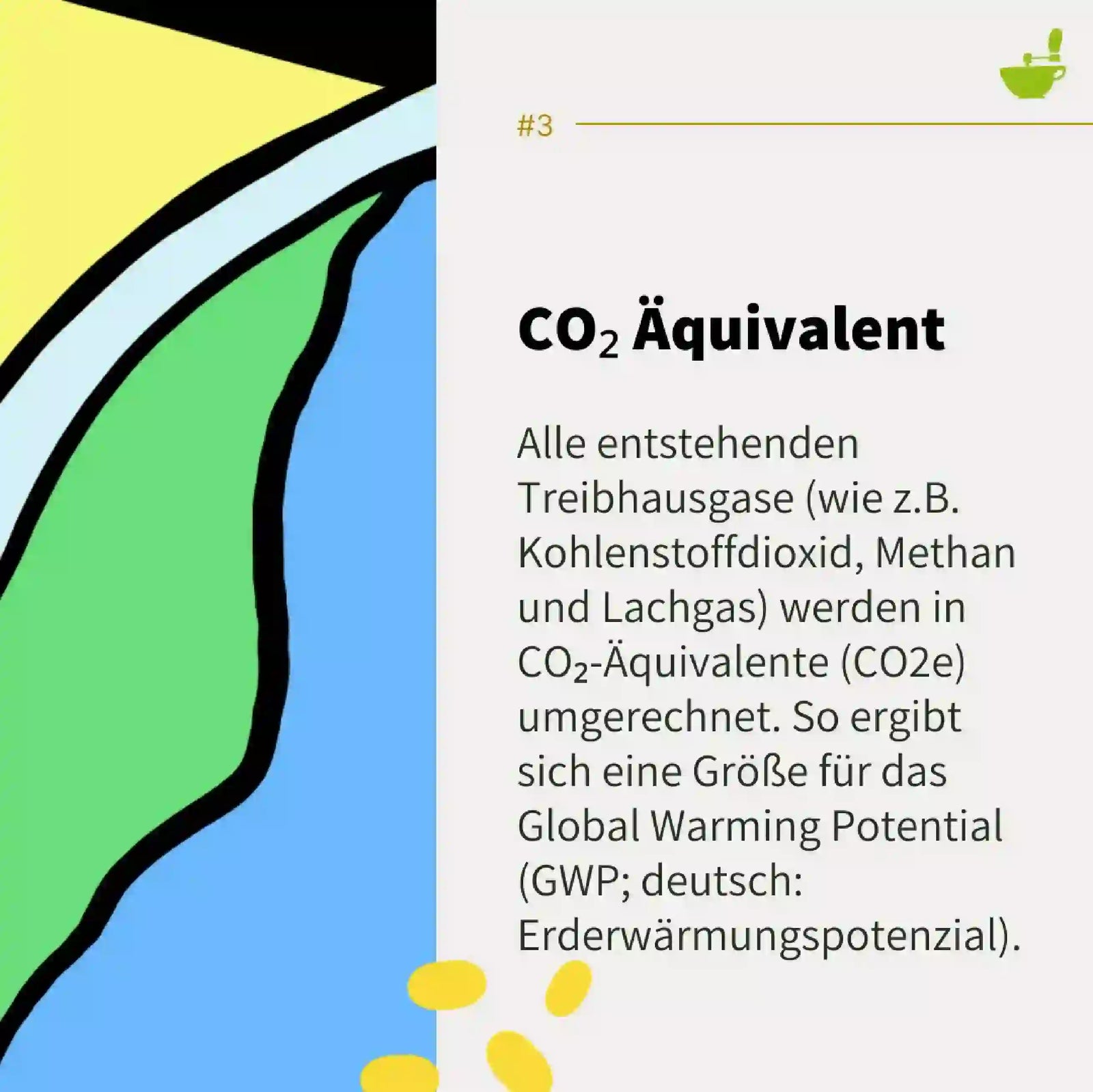
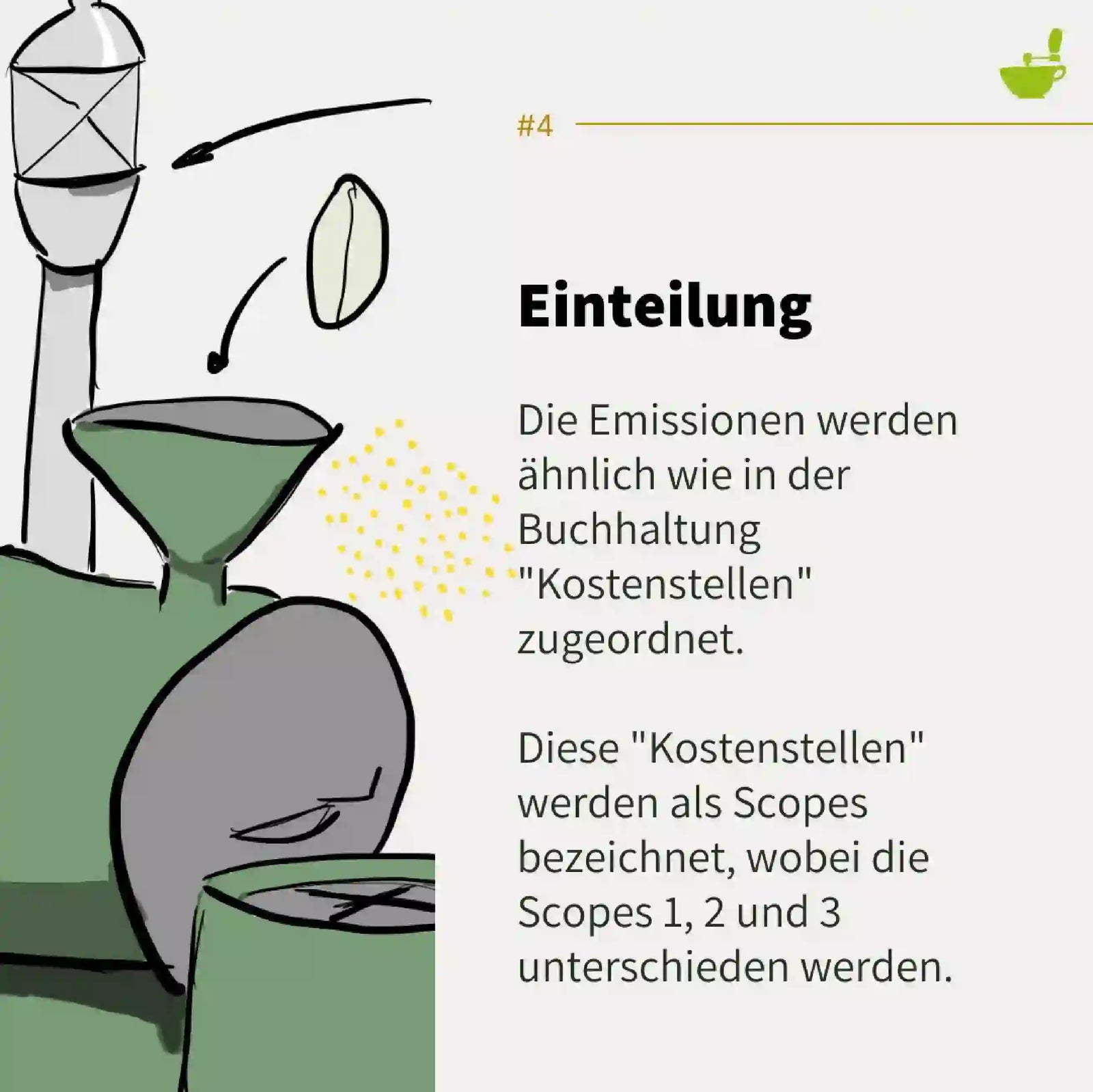
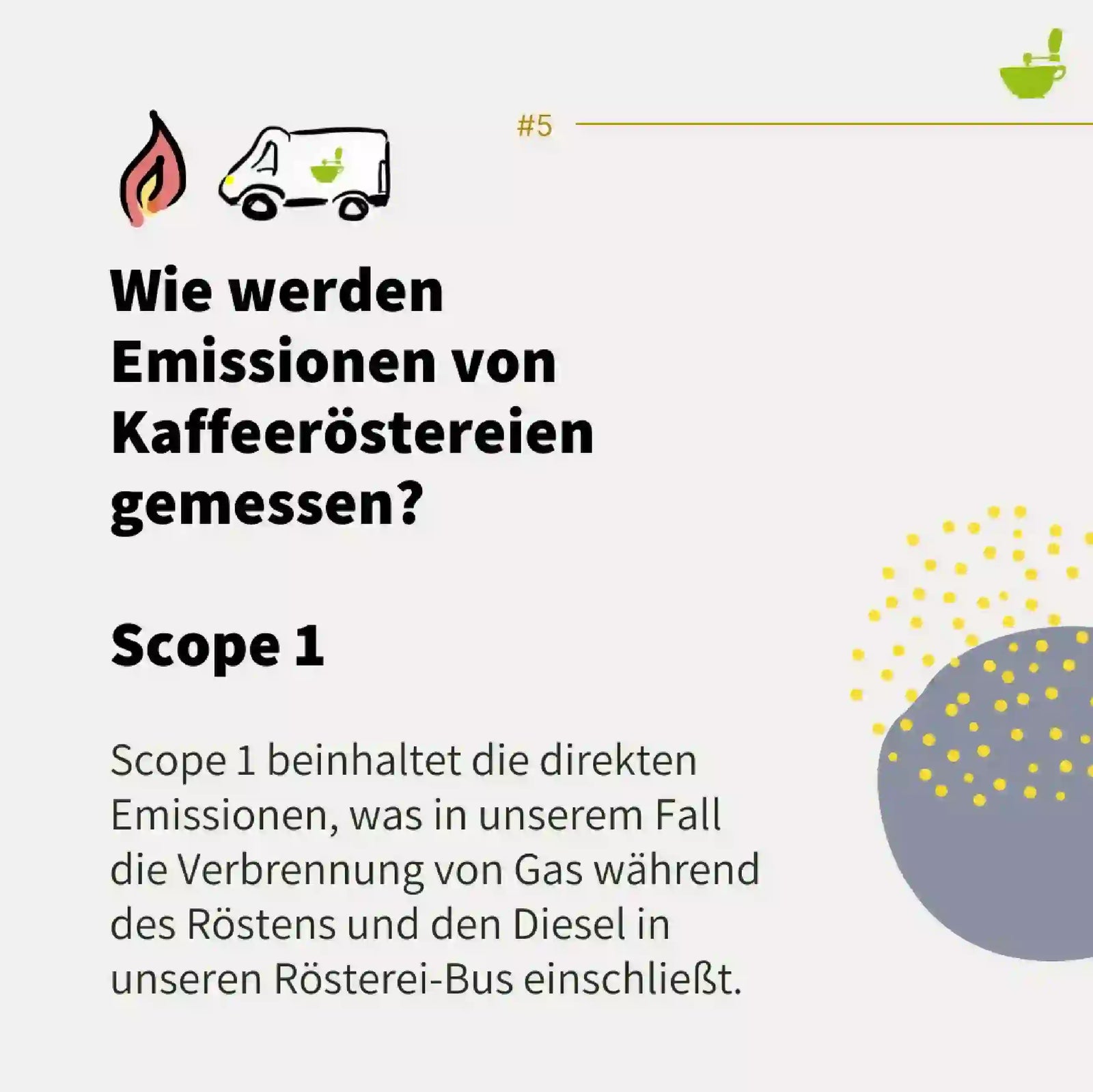
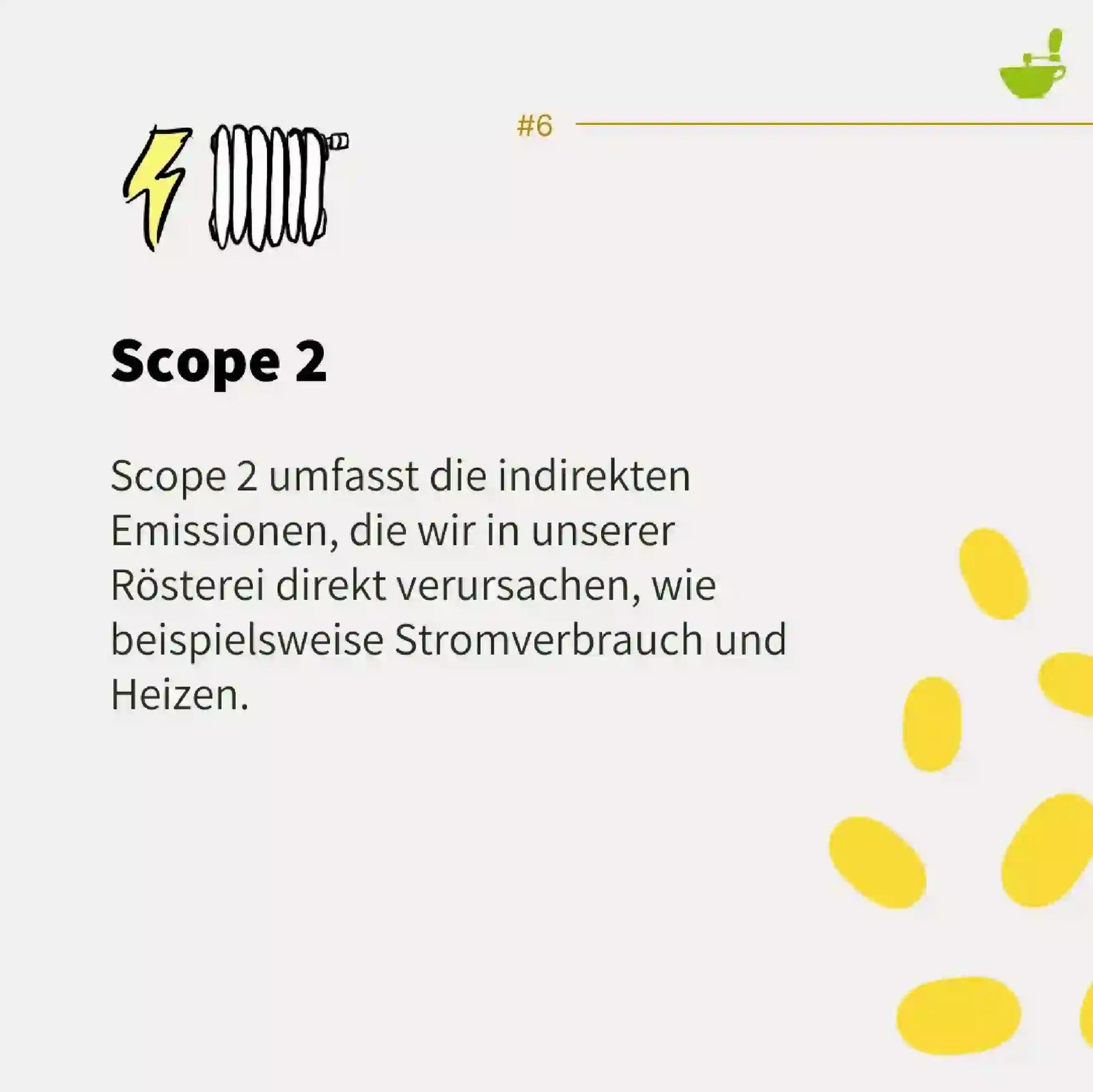
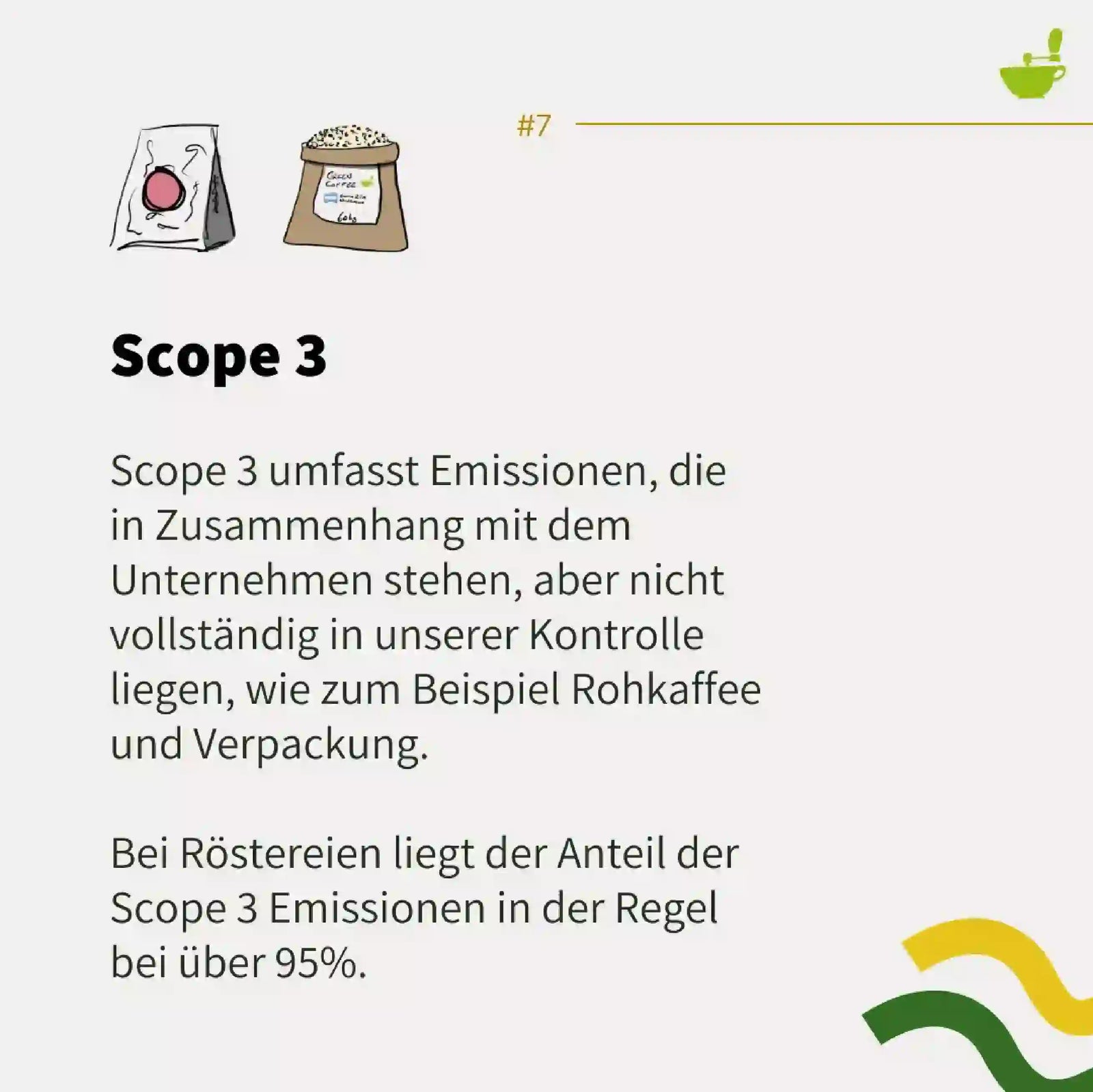
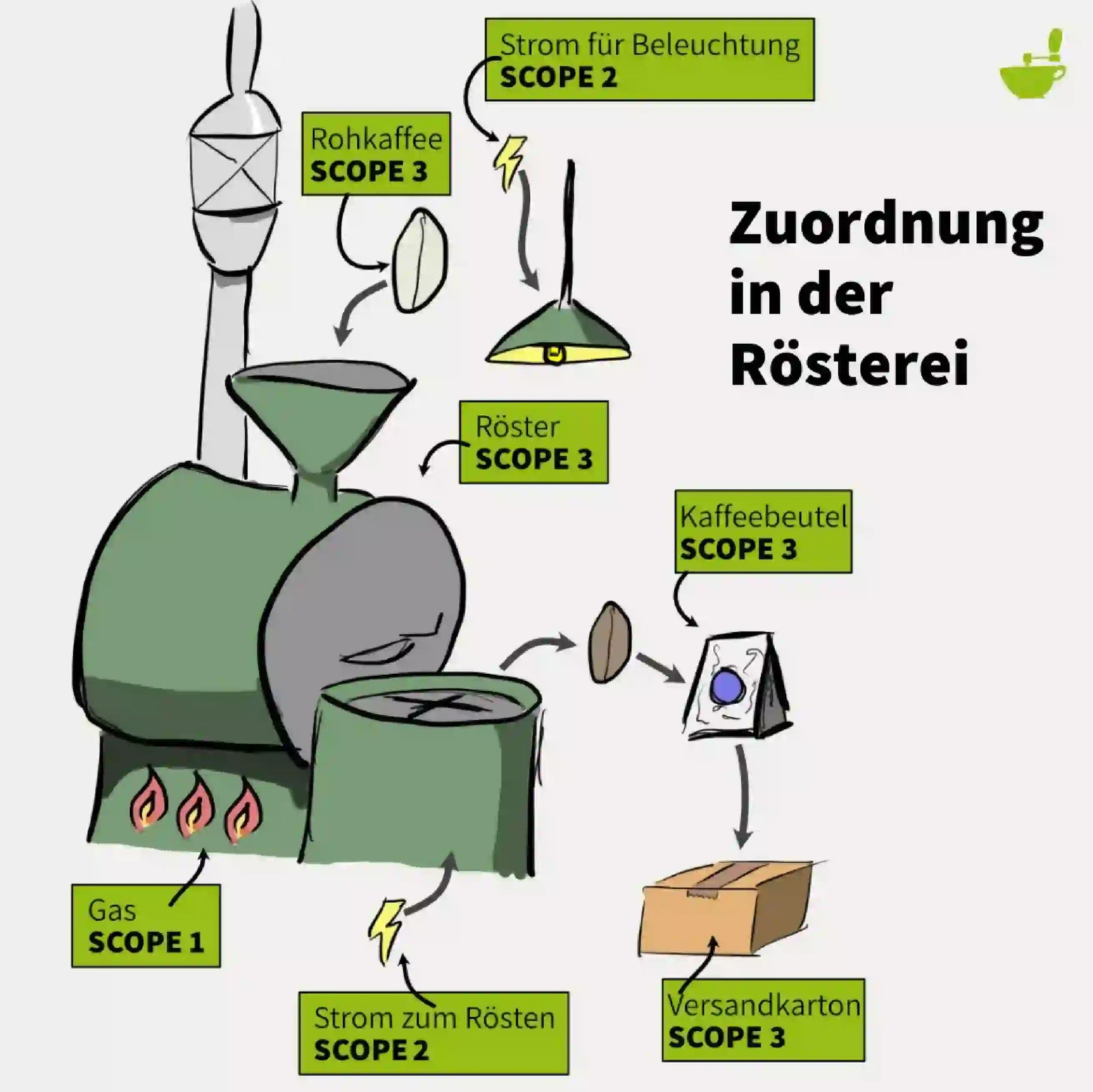
Environmental influences in coffee cultivation
We calculated Santa Rita's CO₂ emissions using the Cool Farm tool. With 1.57 kg CO₂ equivalent per kg of green coffee, the farm performs well. A comparable figure from Carbon Cloud is 3.96 kg CO₂ equivalent per kg of green coffee. Our calculation intentionally excludes the farm's carbon sink. Even if it exists, we cannot guarantee that the forest will remain standing for the next 50-100 years.
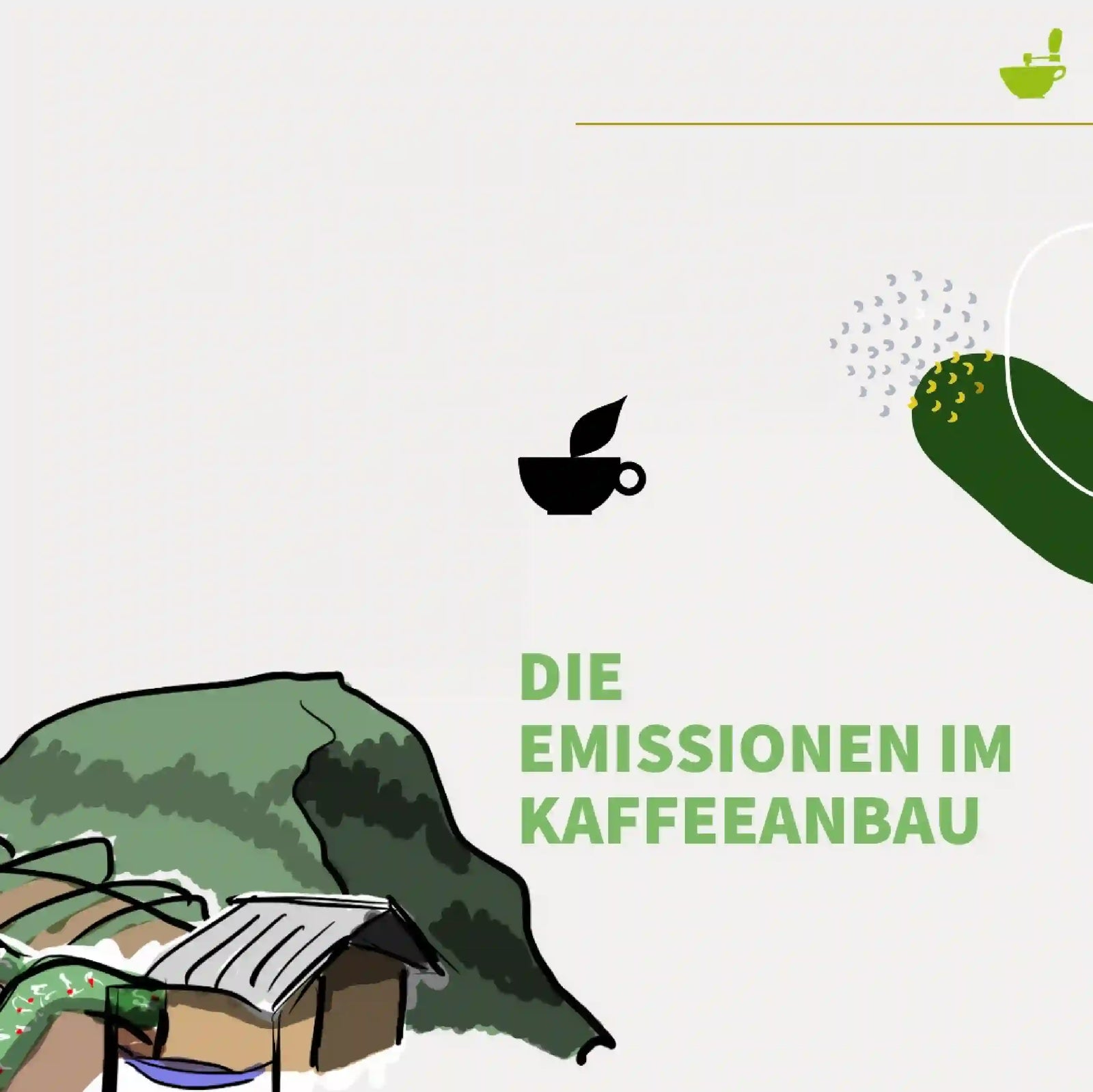
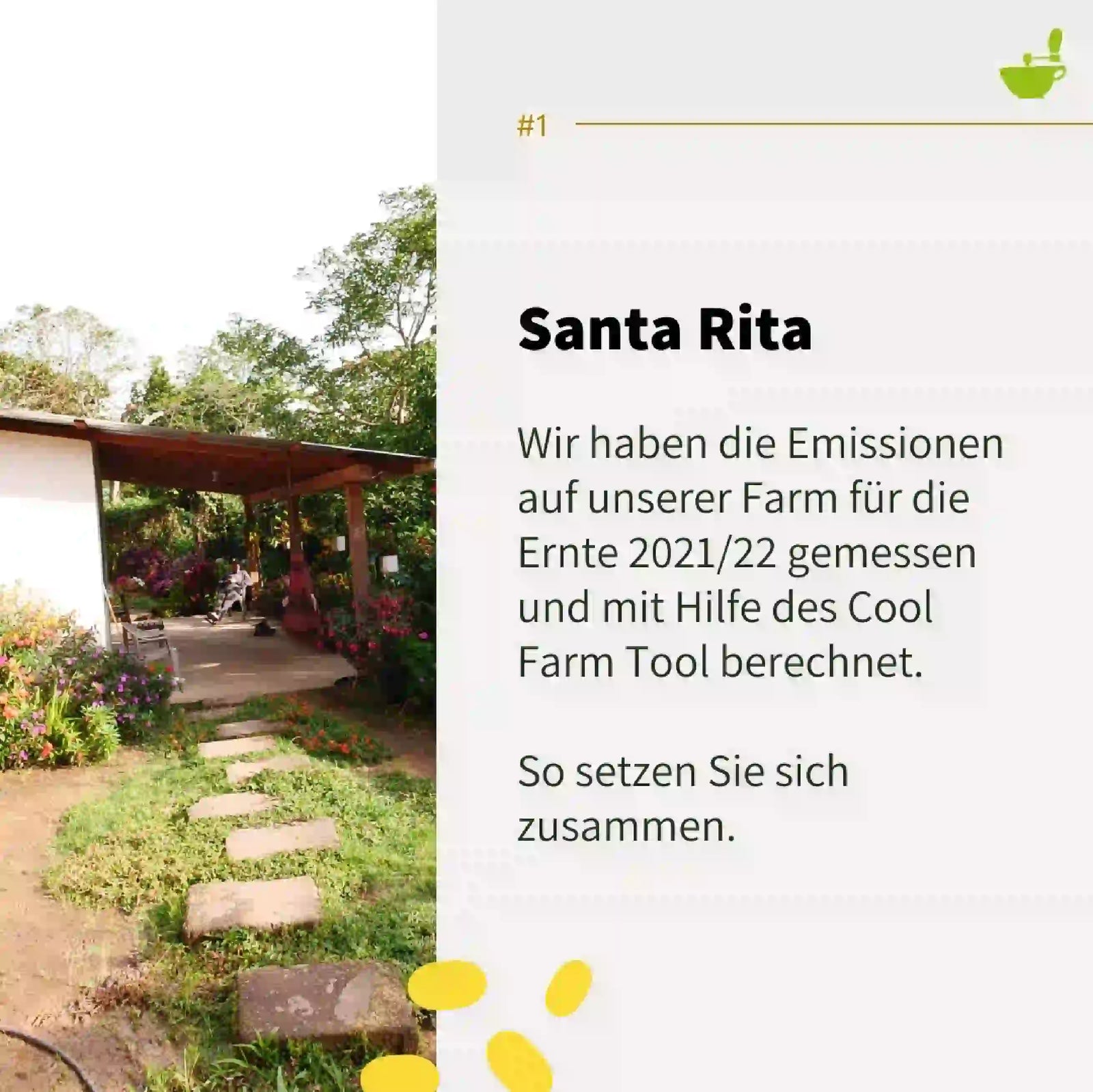
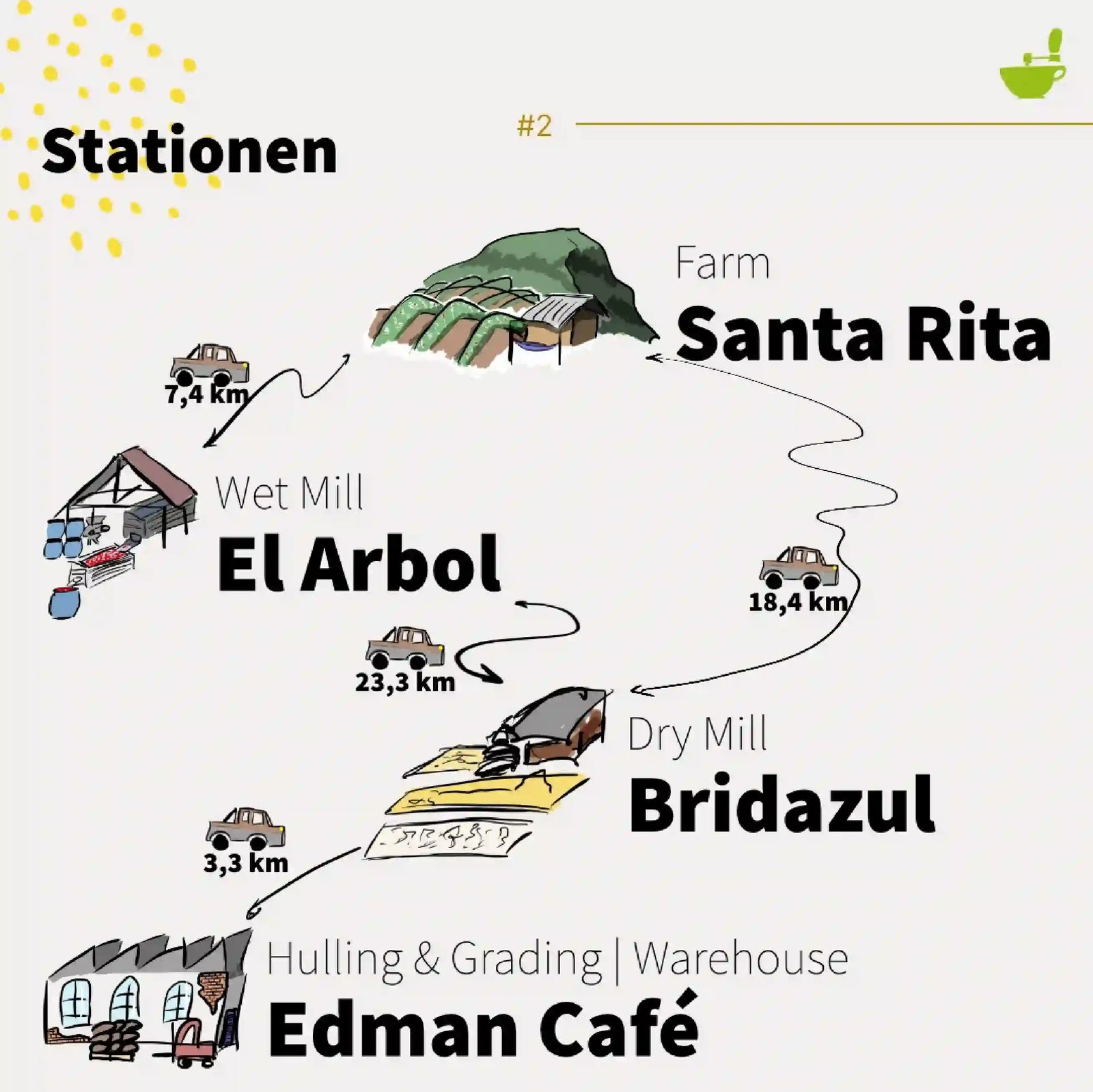
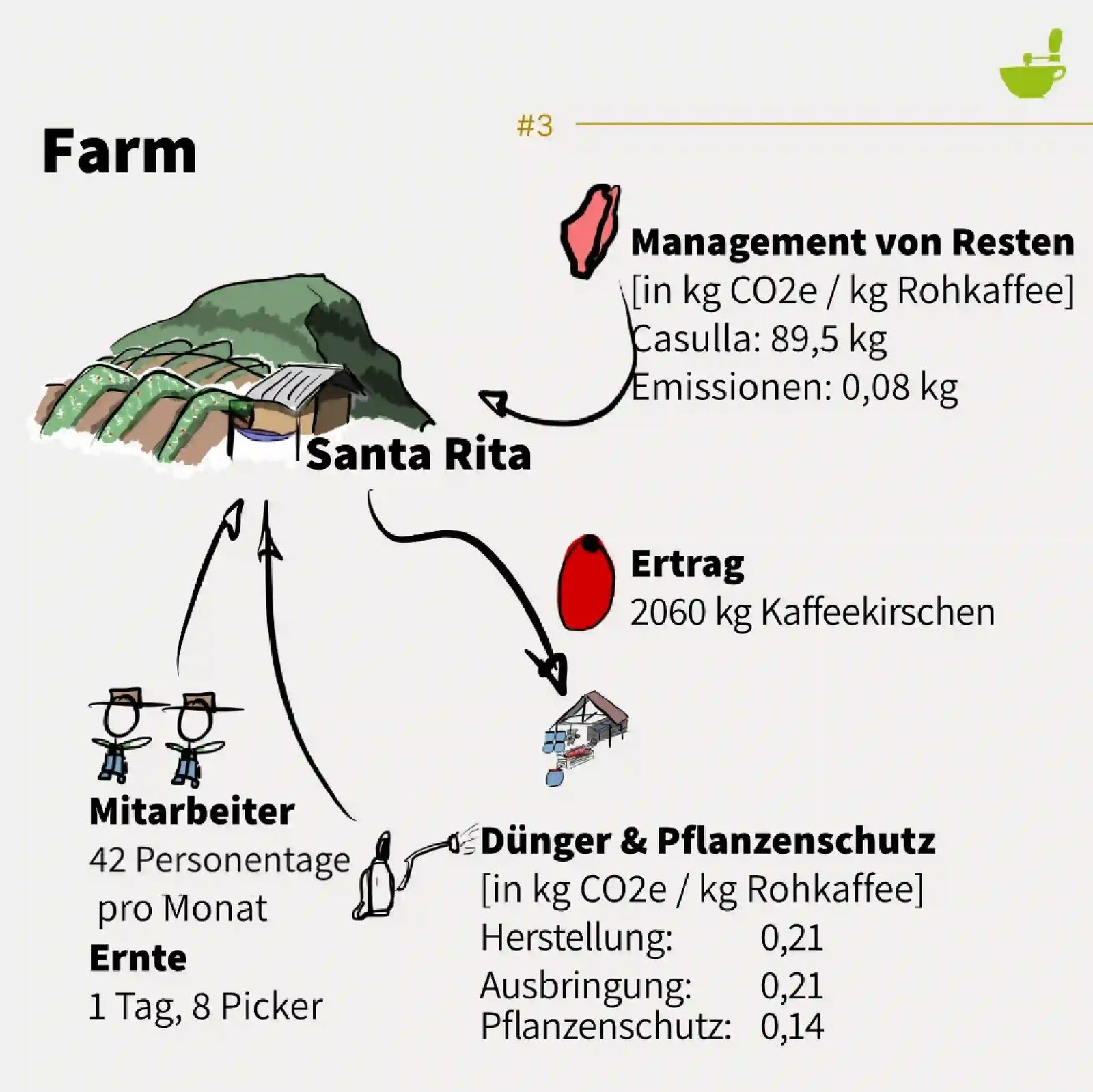
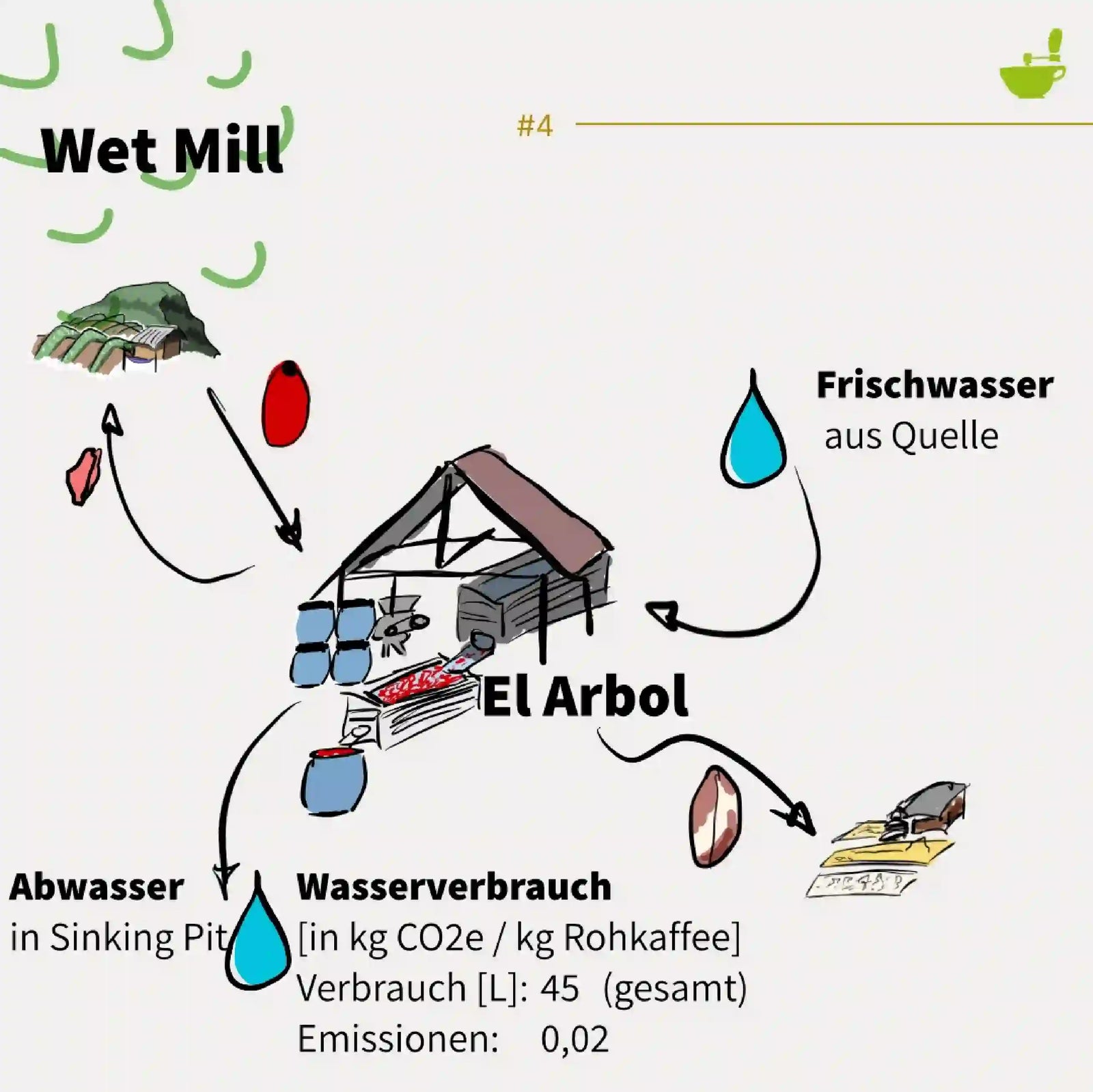
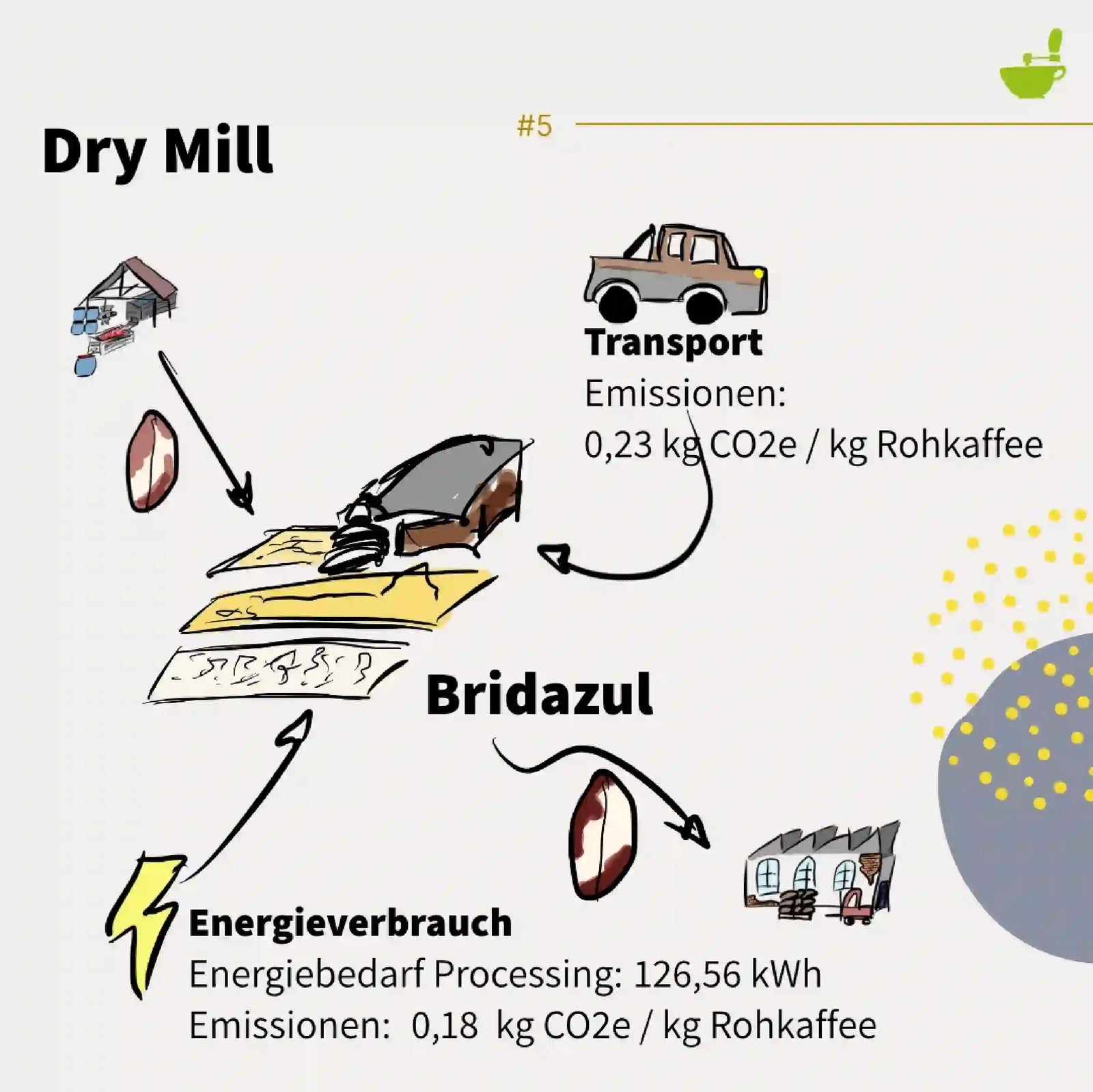
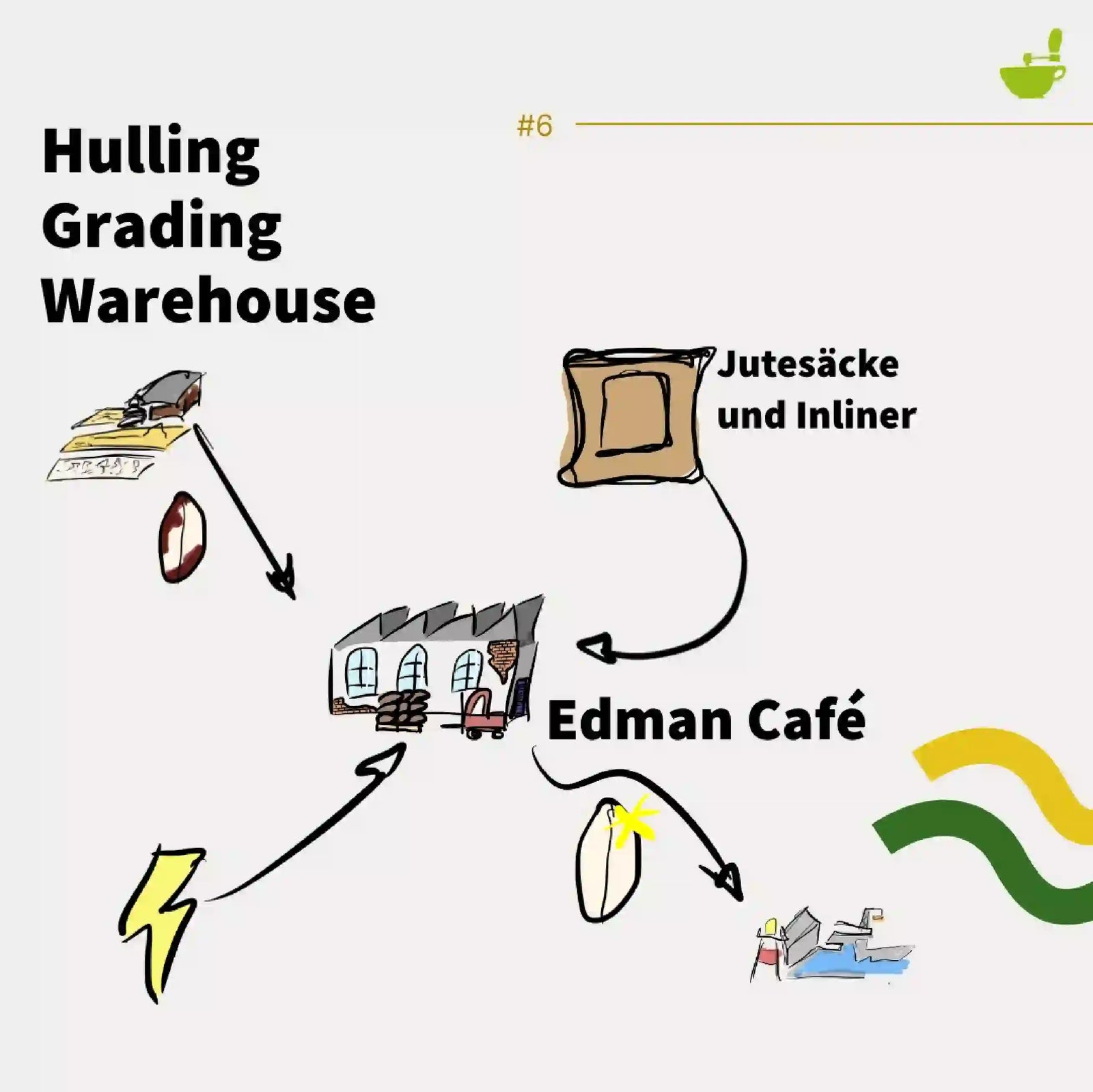
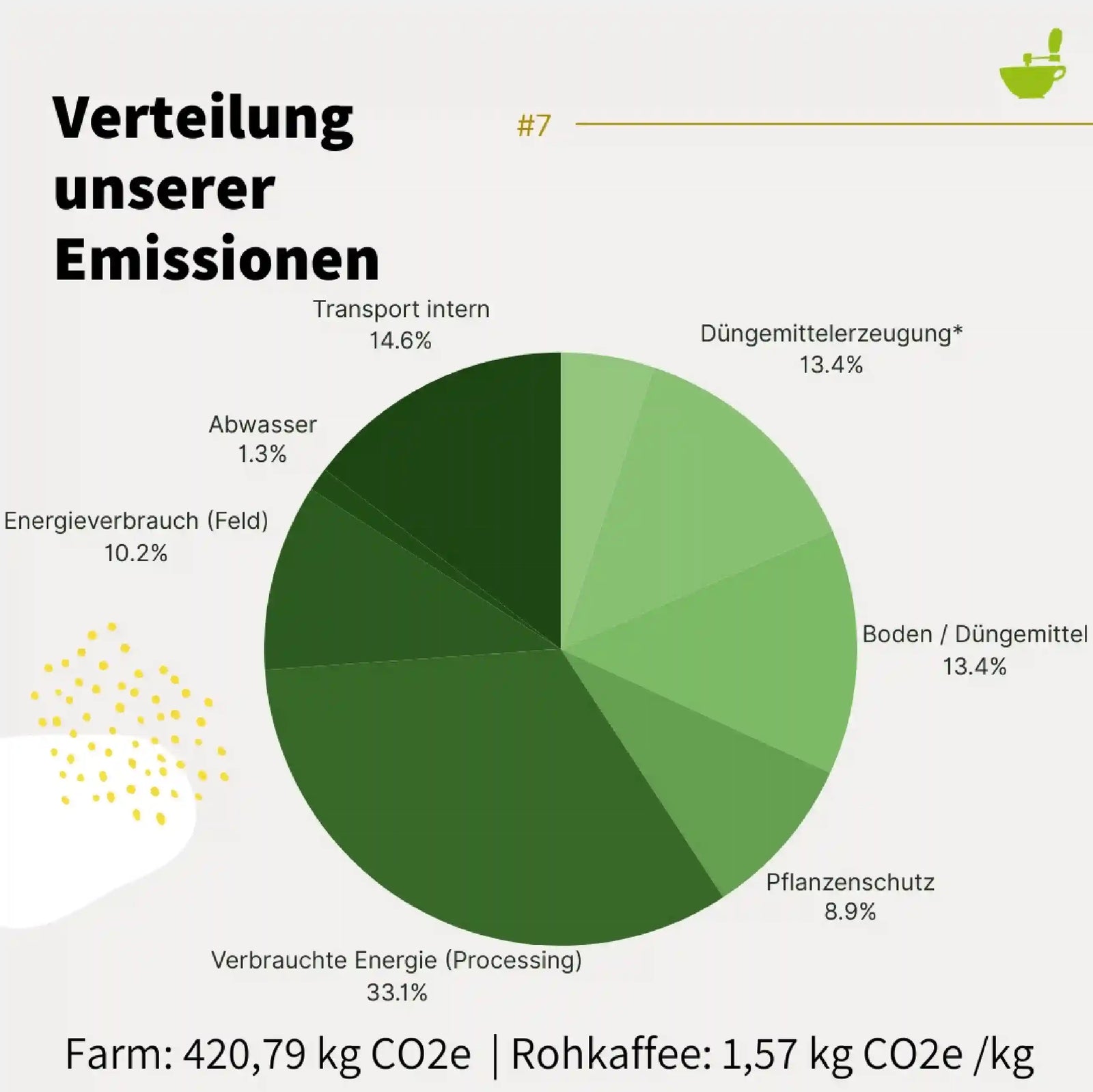

The share of transport in coffee emissions
In our analysis, transport is divided into “cultivation to port”, “port to port” (ship or air transport) and “port to roastery”.
These three areas each account for approximately one-third of the transport emissions for our coffees. These, in turn, account for 22.3% of total emissions for coffee from Nicaragua.
We've created a simple CO₂ calculator for the calculation. It's based on data from Mobitool and can be used for any shipment. Whether it's coffee, cocoa, avocados, or tomatoes, the calculation is always based on the weight of the shipment.
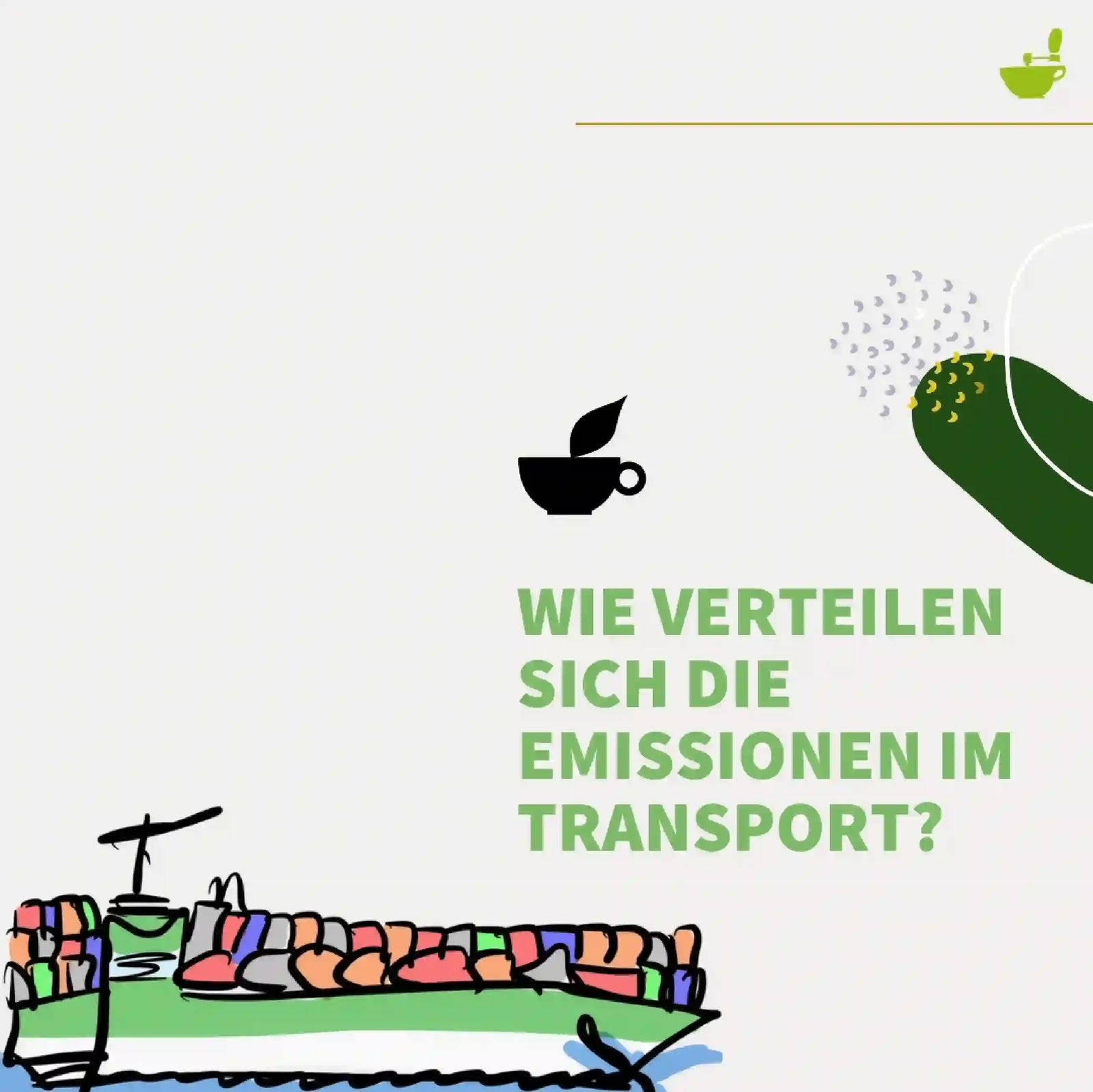
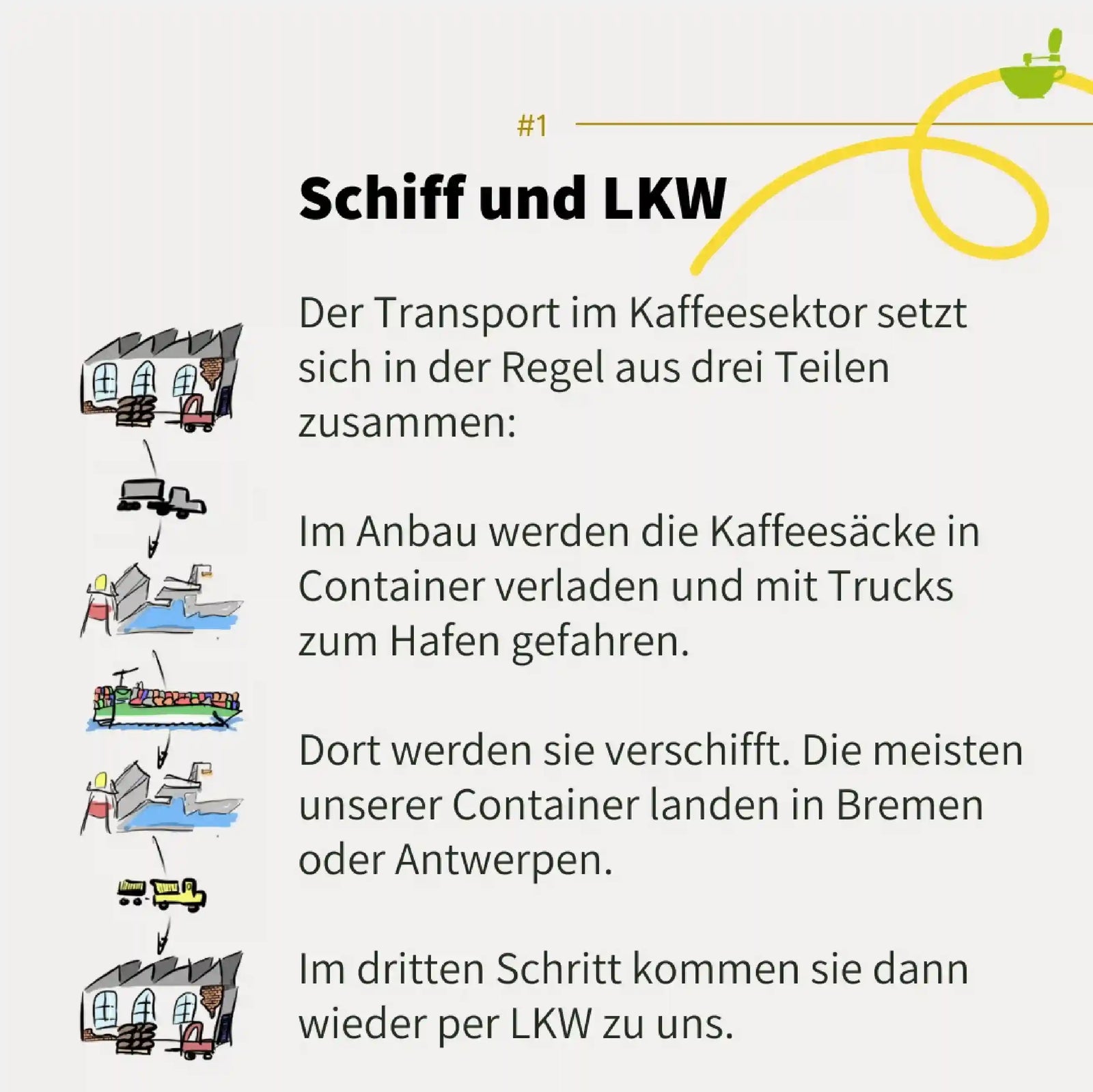
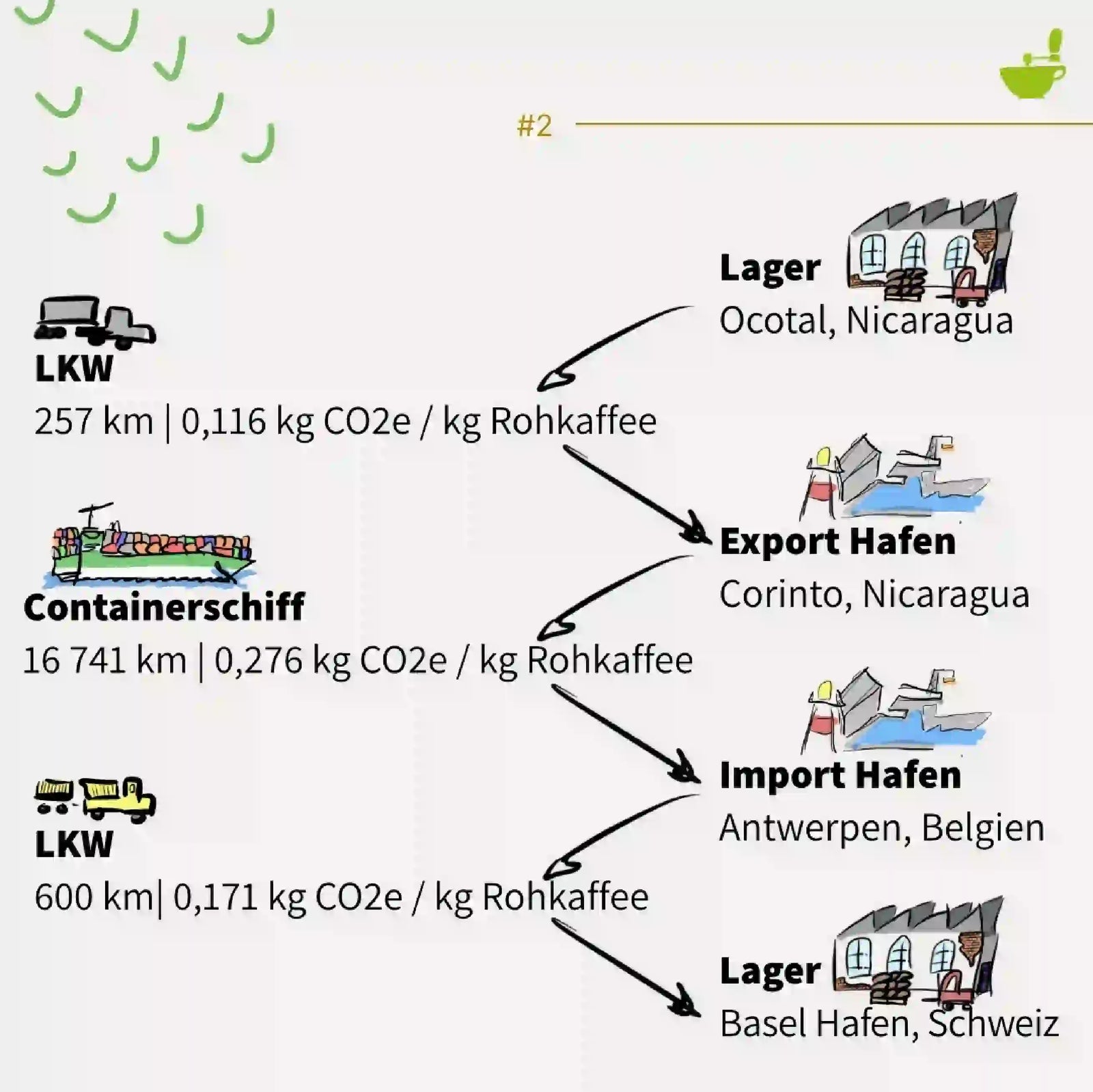
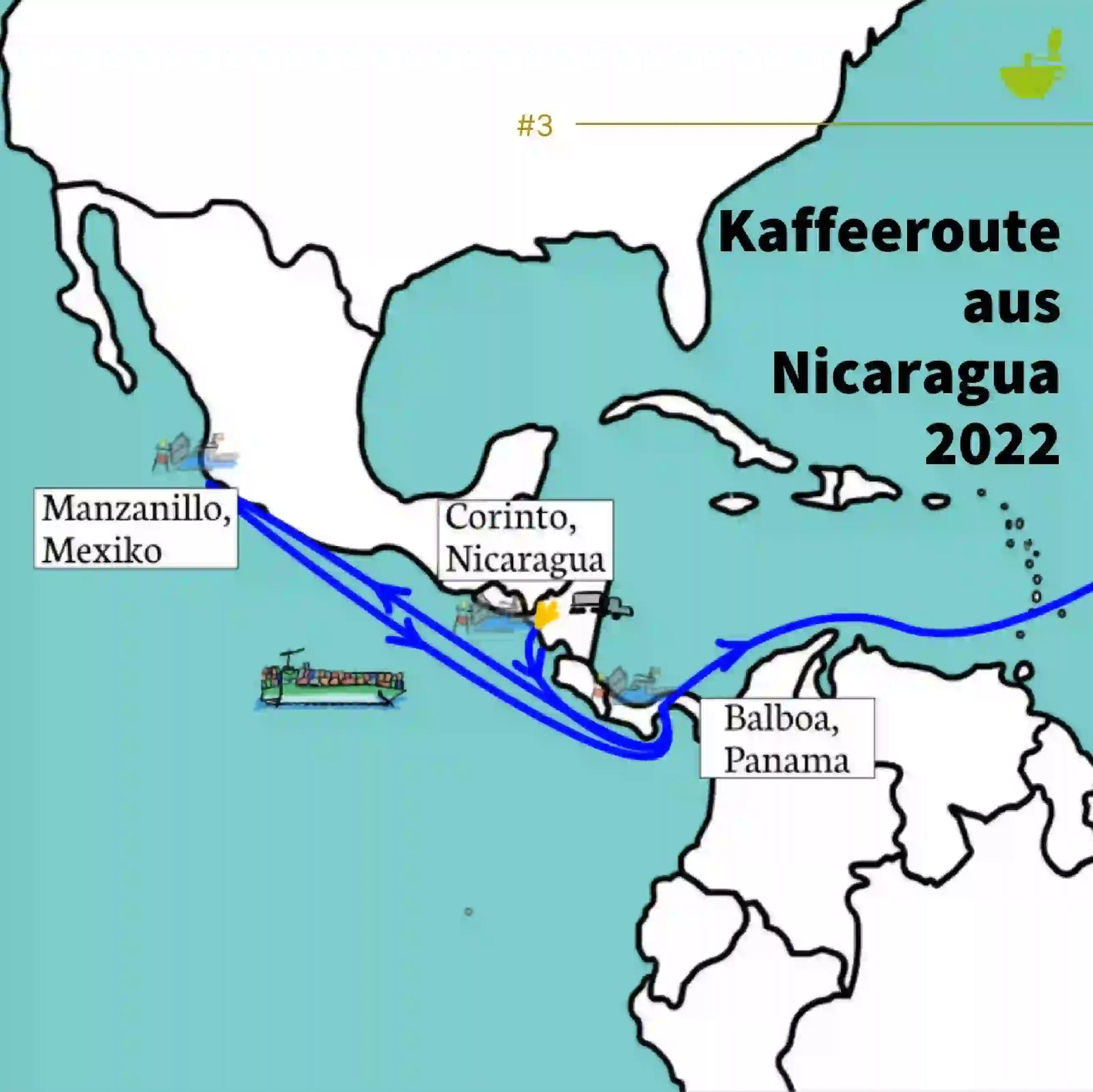
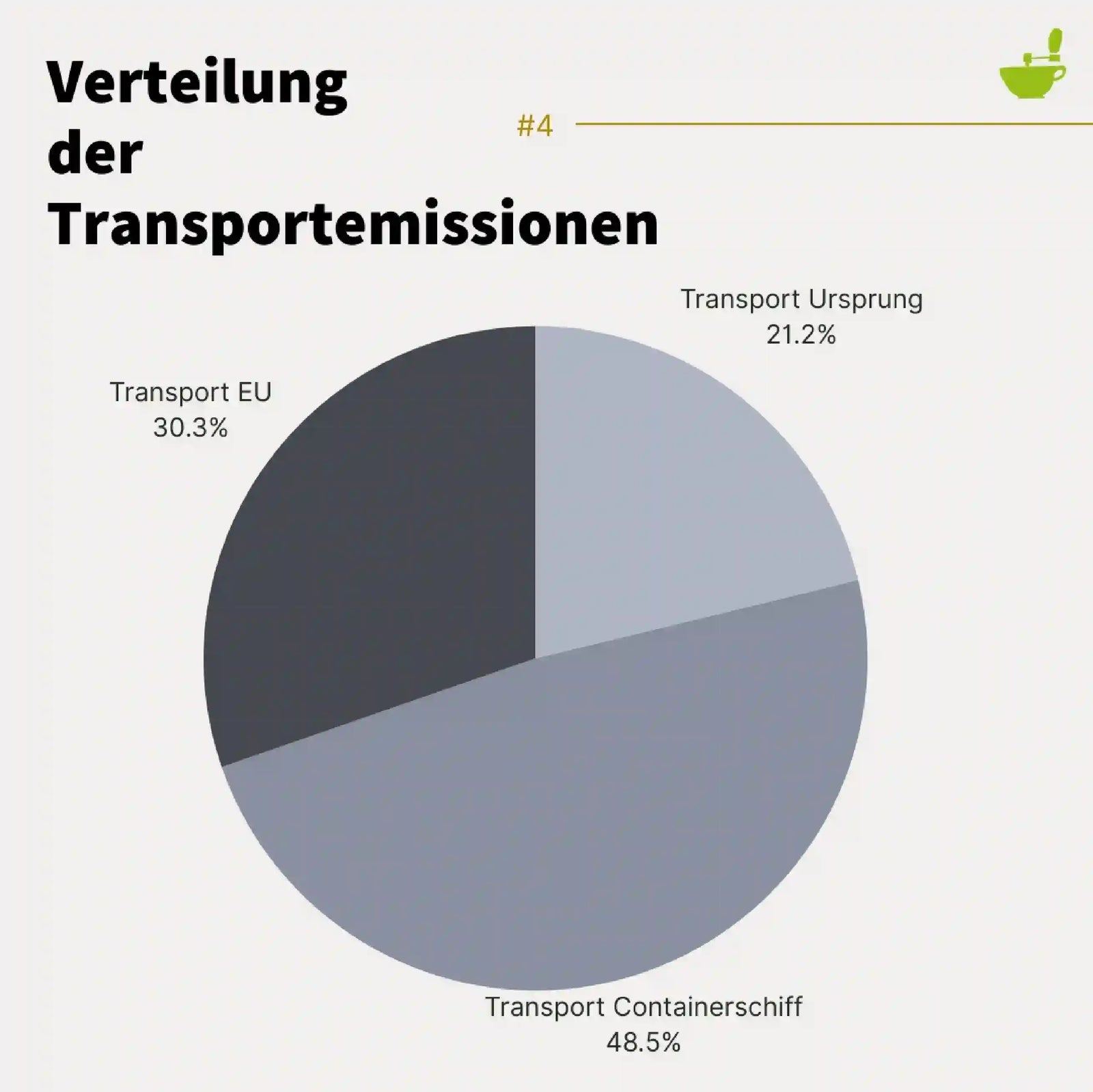
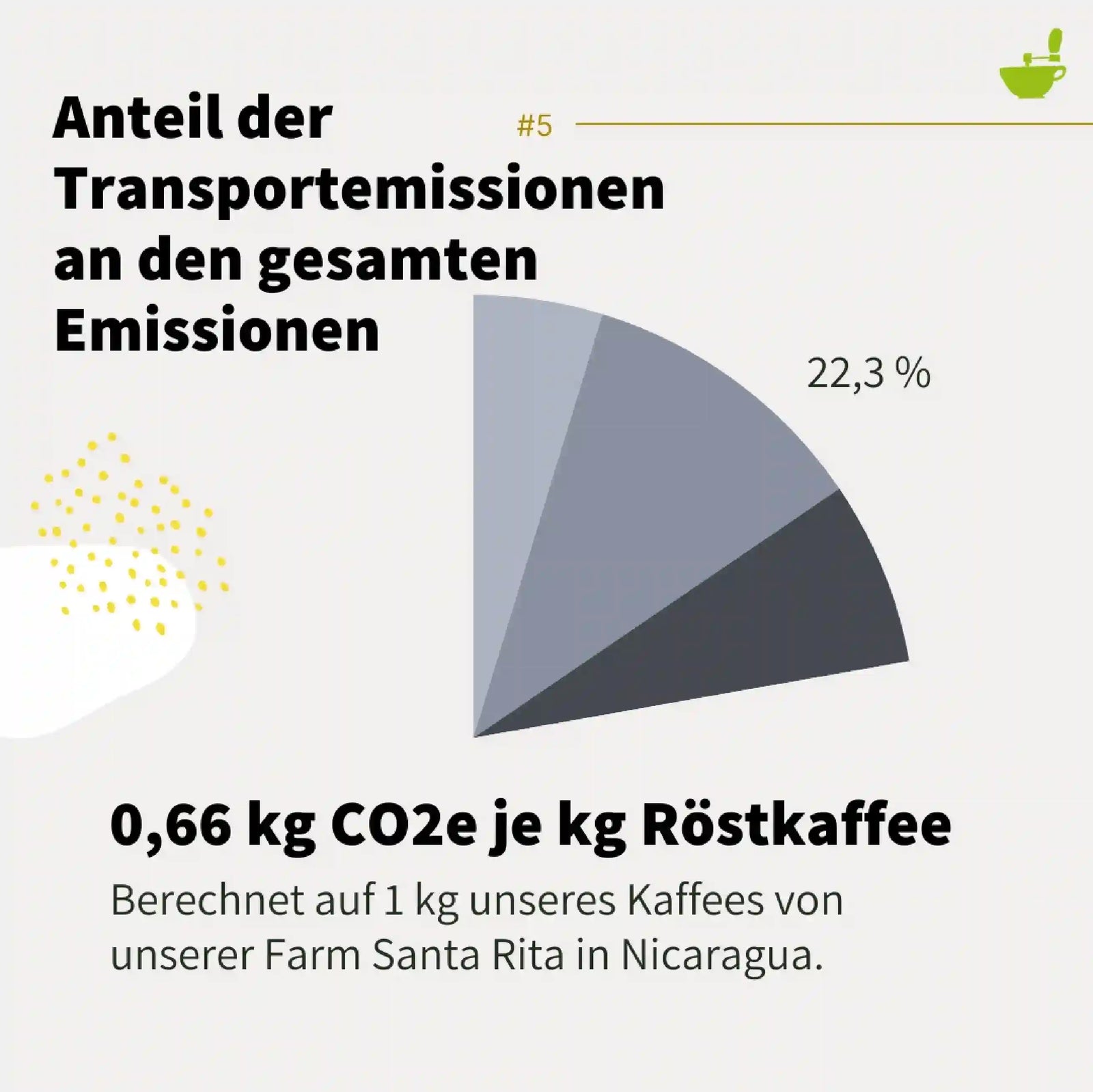
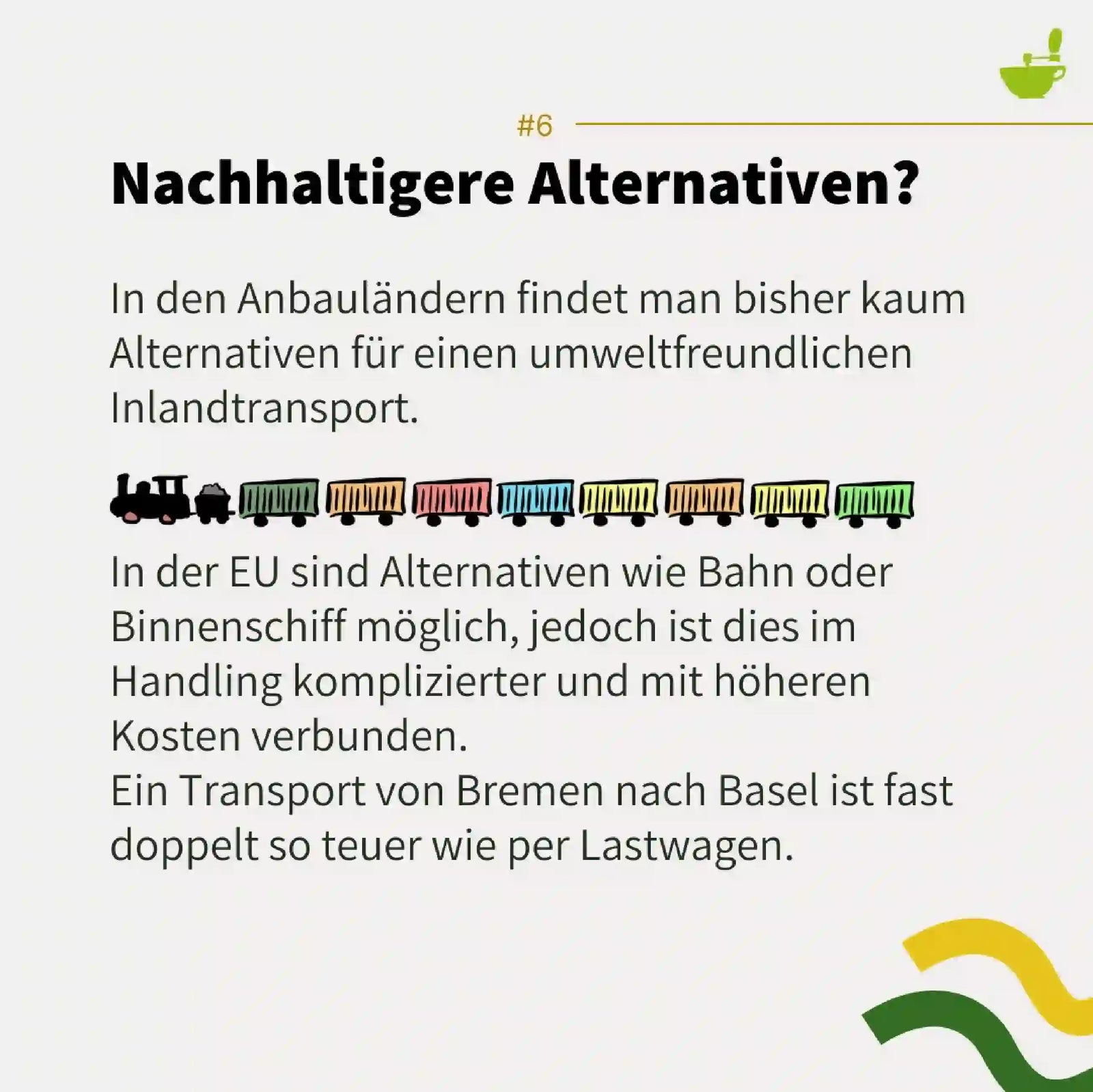
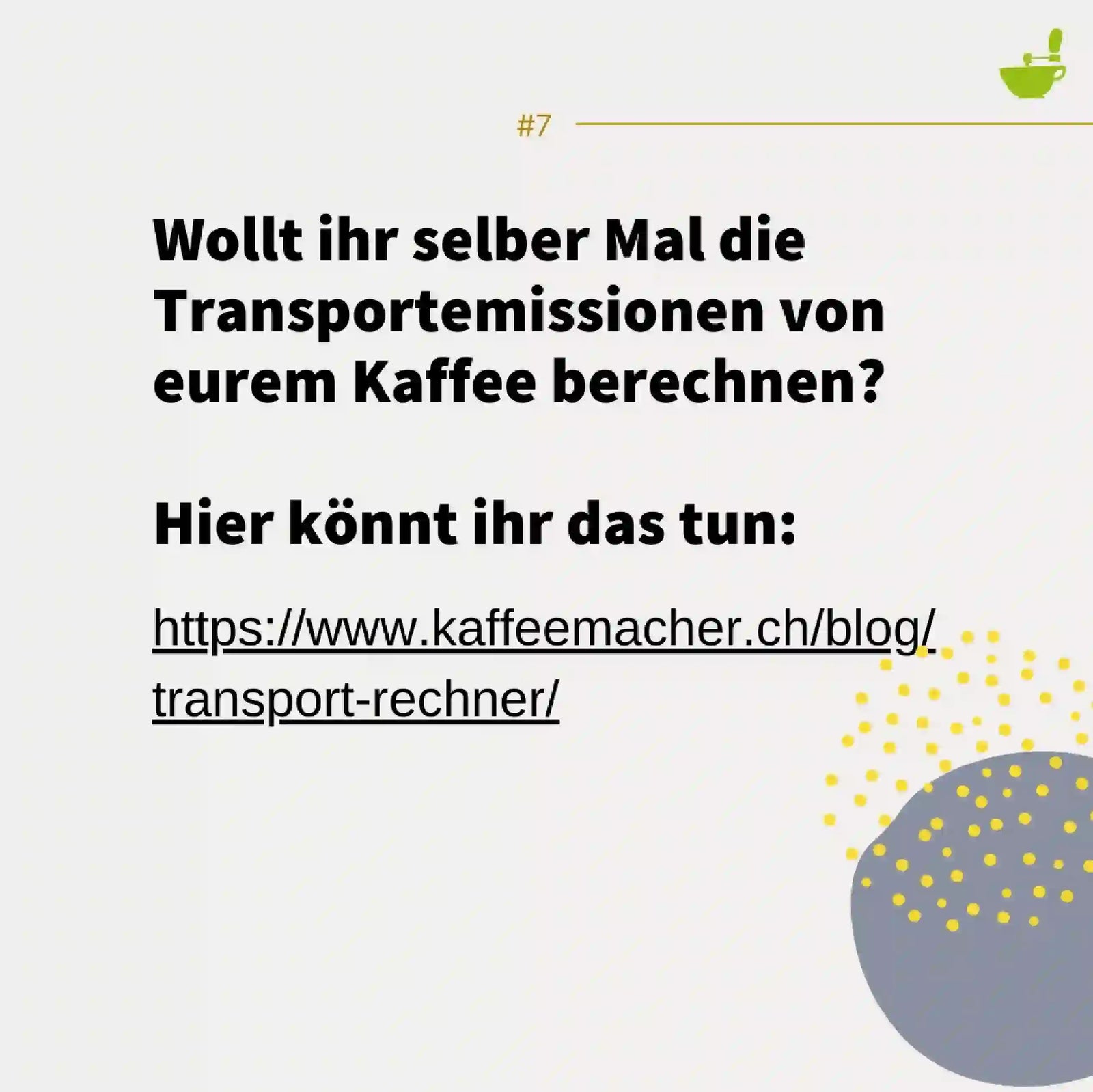
The footprint of our roastery
The Kaffeemacher roastery in Basel roasted almost 50 tons of green coffee in 2022. This generated 22.12 tons of CO₂ equivalents. Broken down to one kilogram of coffee, this still amounts to 0.45 kg CO₂e per kg of roasted coffee, or 15.2% for Santa Rita coffee. The largest factors in a roastery's footprint are gas consumption for roasting, packaging, and business travel to the source.
A 250g mono-plastic bag produces approximately 64g of CO2 equivalent during production. If the bag is incinerated, this figure can be roughly doubled.
And although it only represents a small part of the value chain, it's the measures we can implement locally ourselves. Together, cultivation, transport, and roasting add up to 2.96 kg CO2e per kg of roasted coffee (that's 0.75 kg CO2e per 250g bag). This corresponds to a car journey of approximately 20 km.
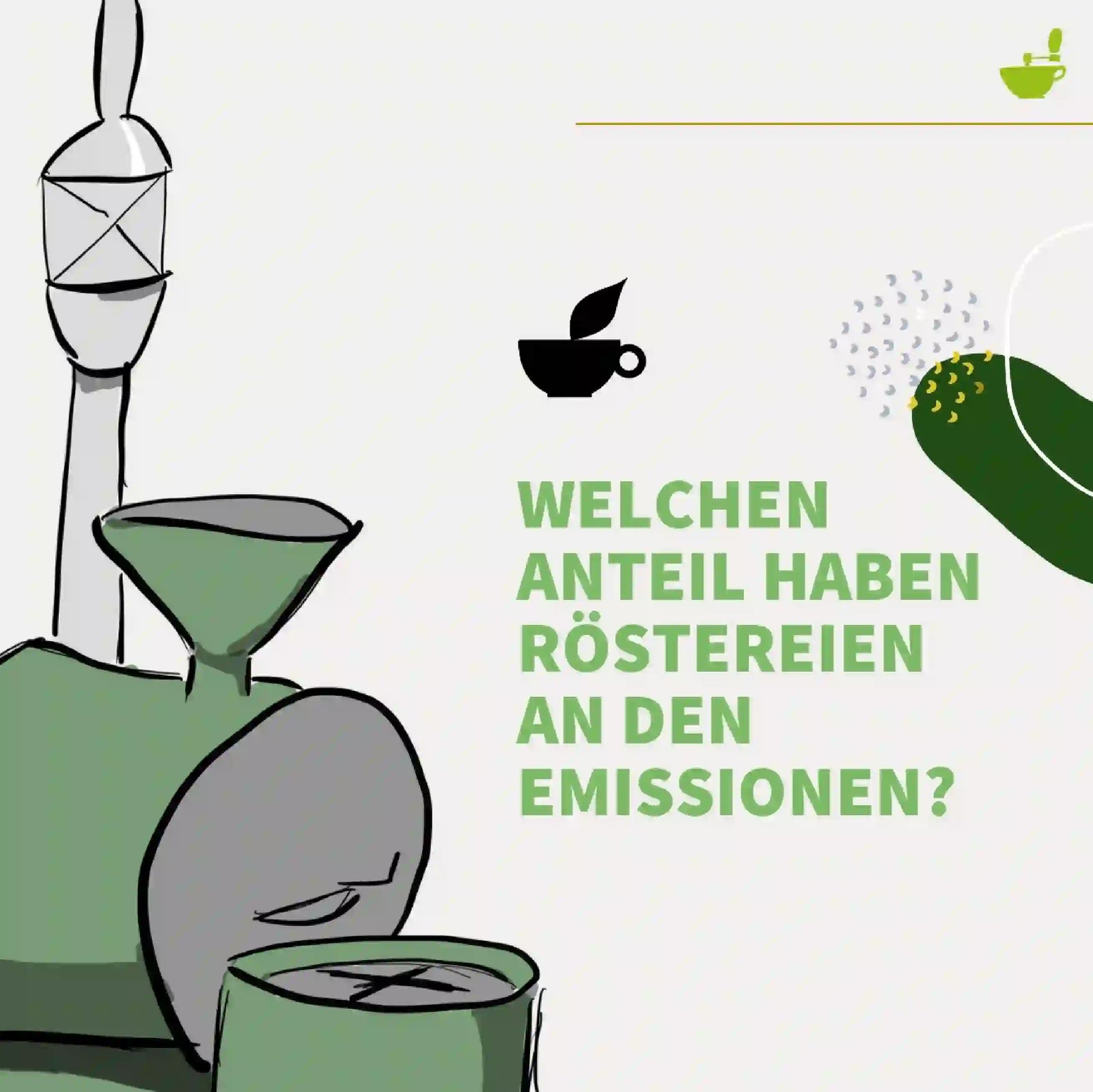
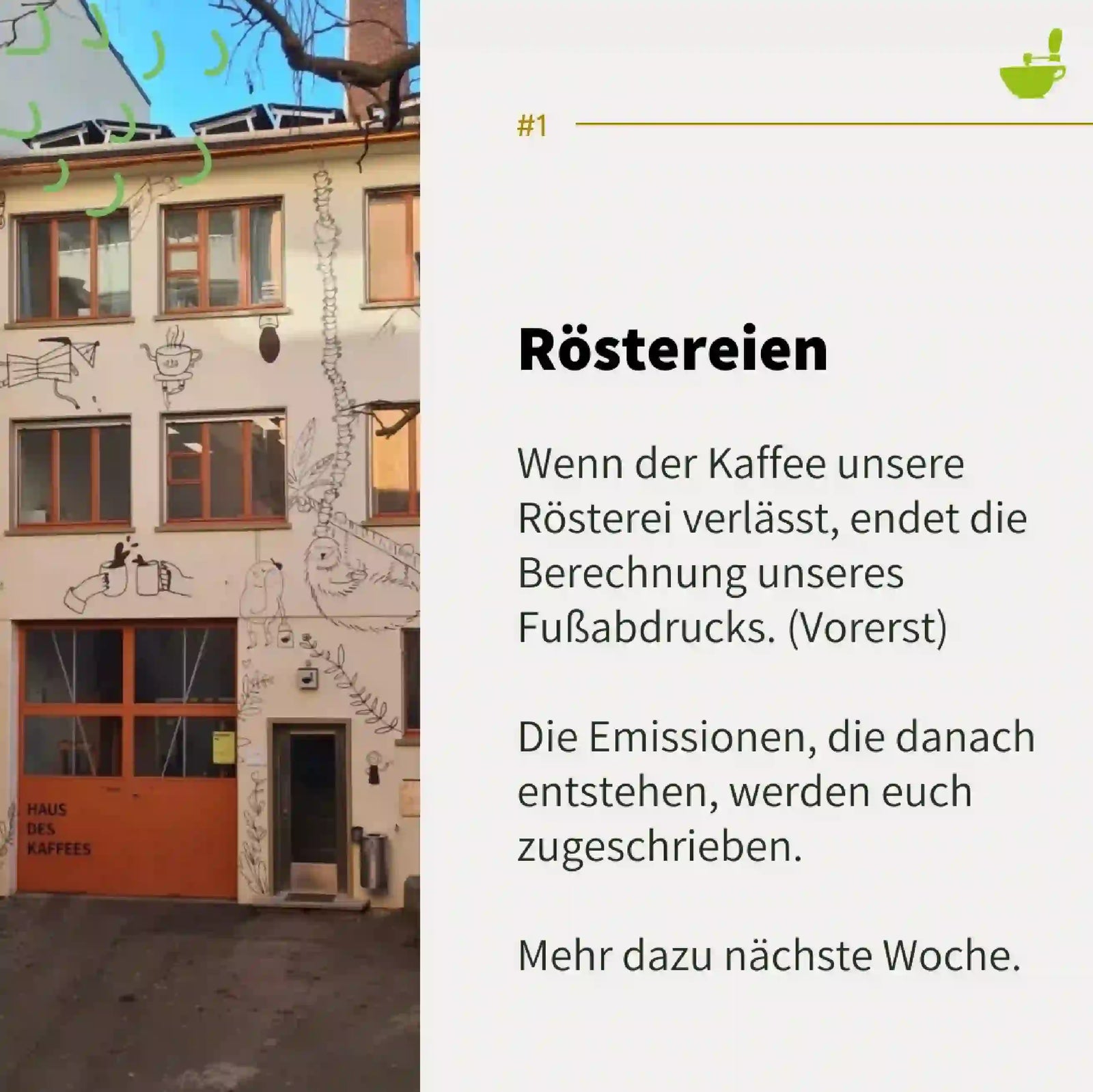
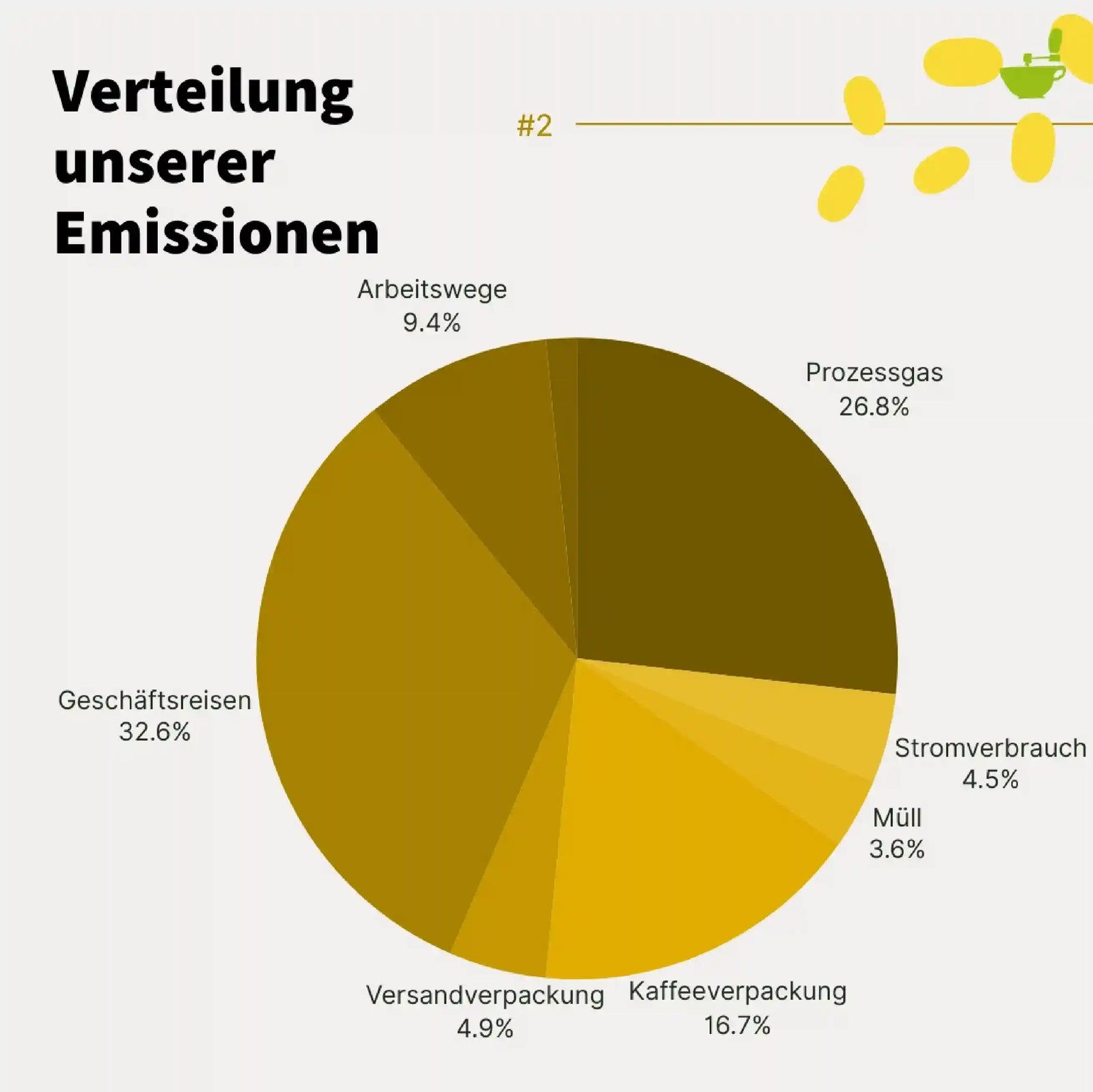
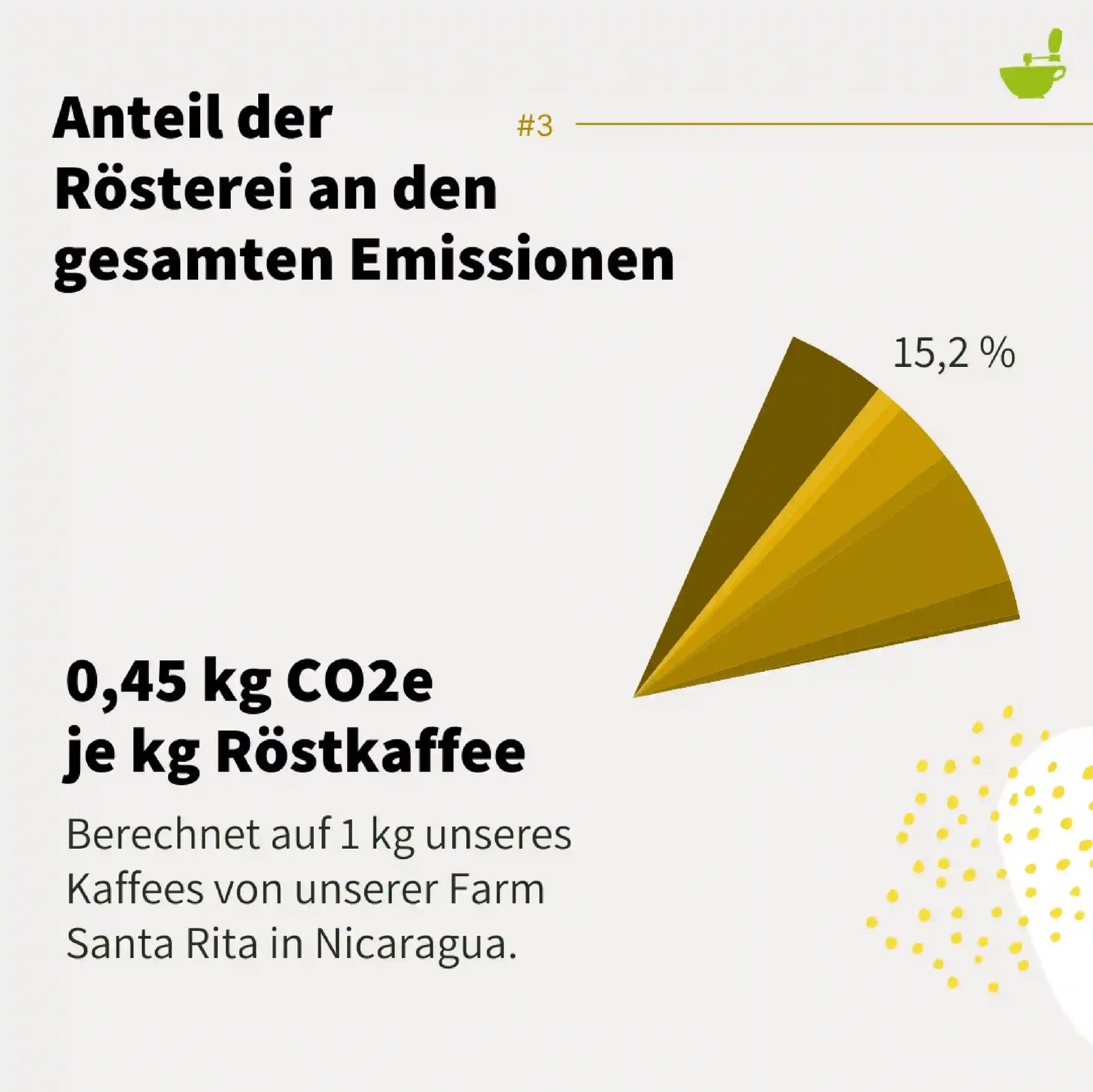
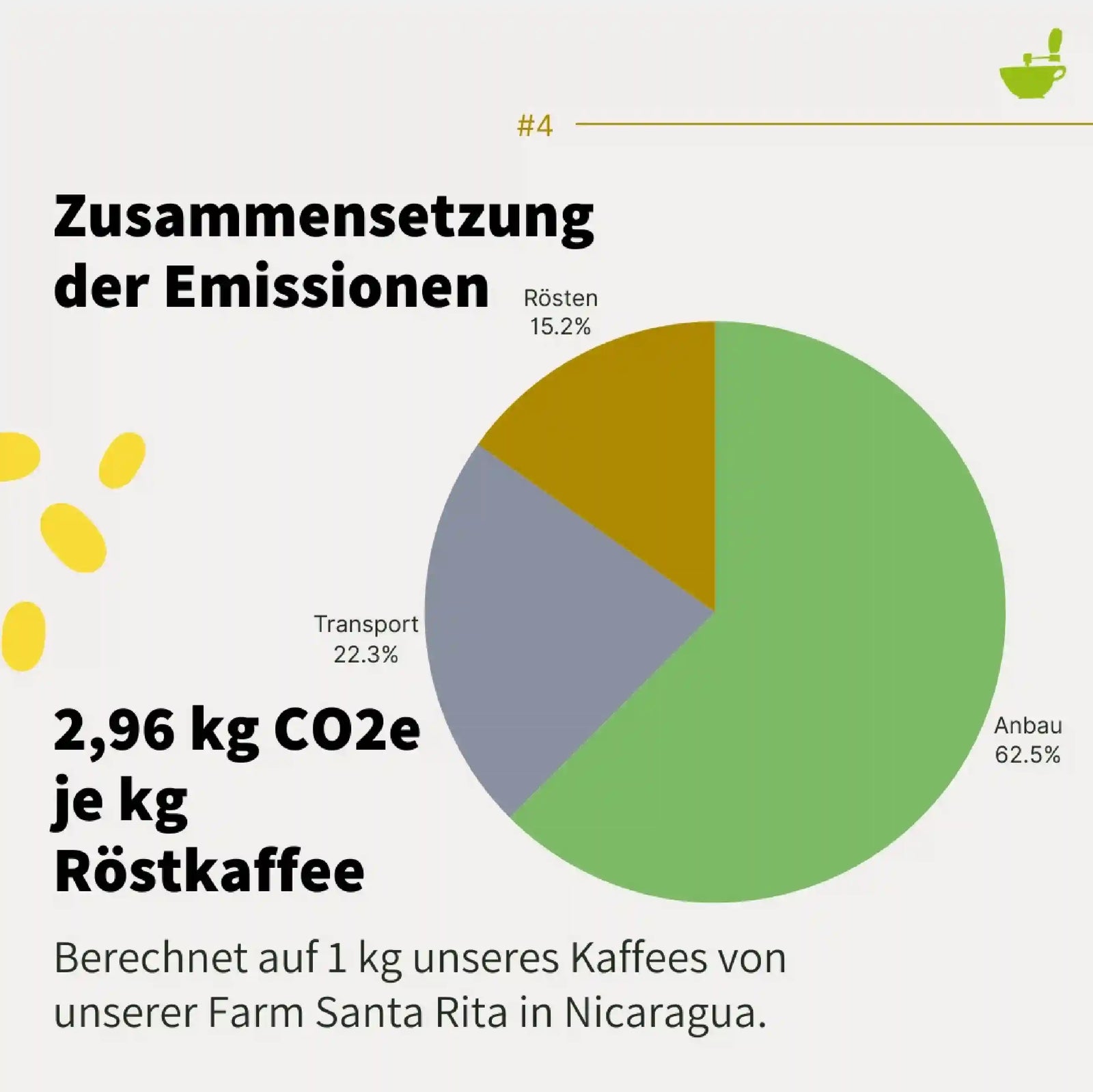
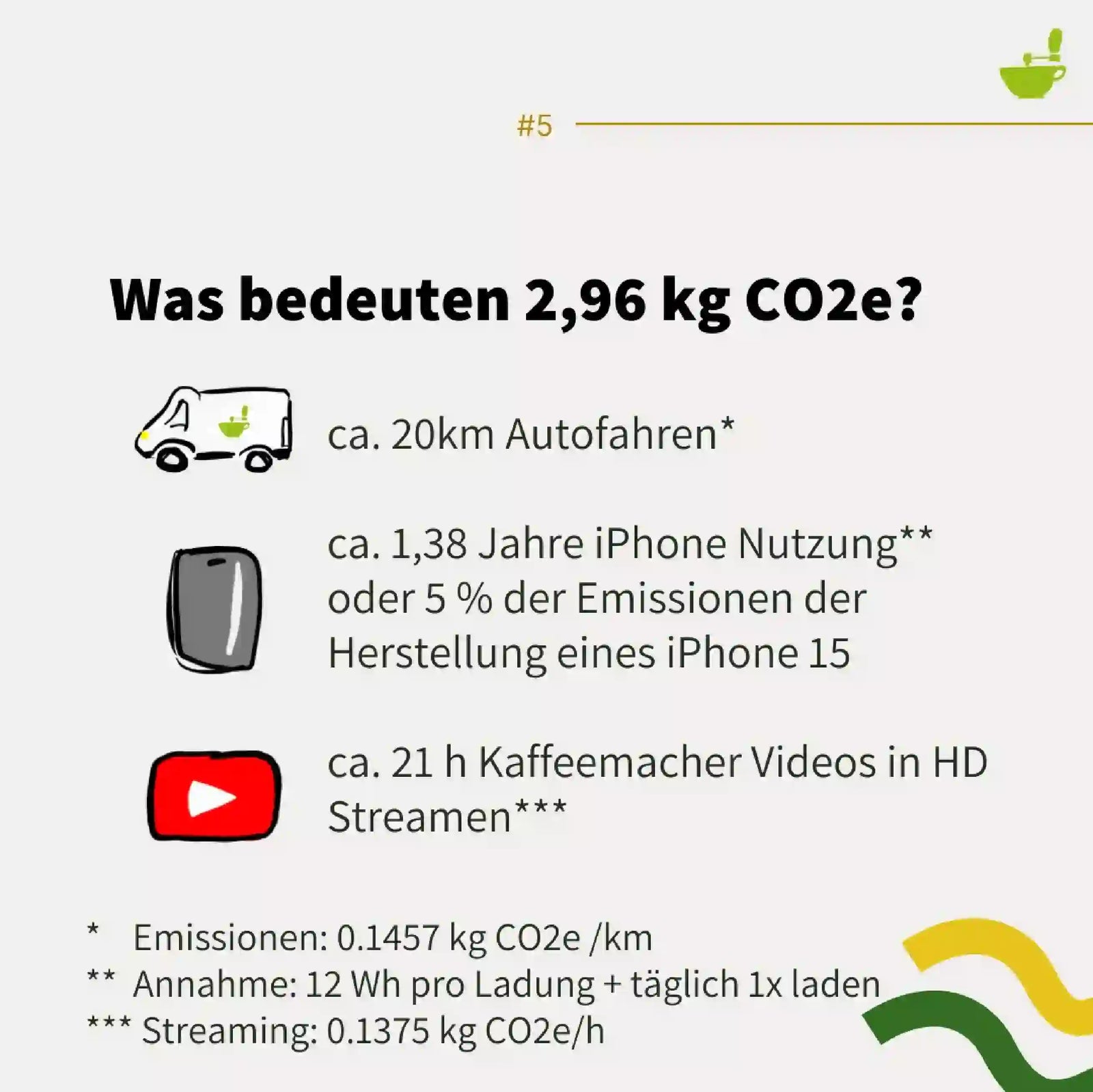
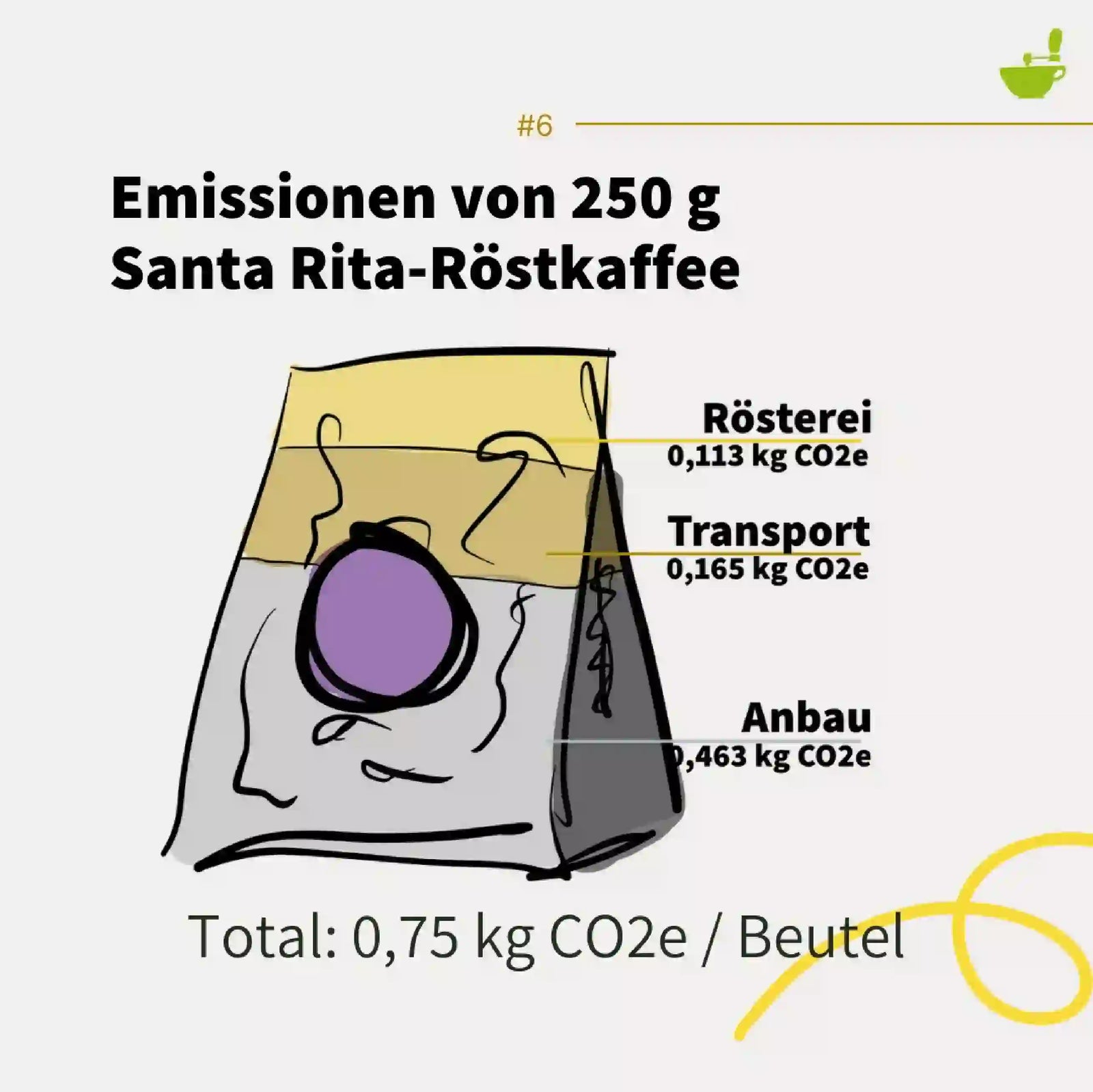
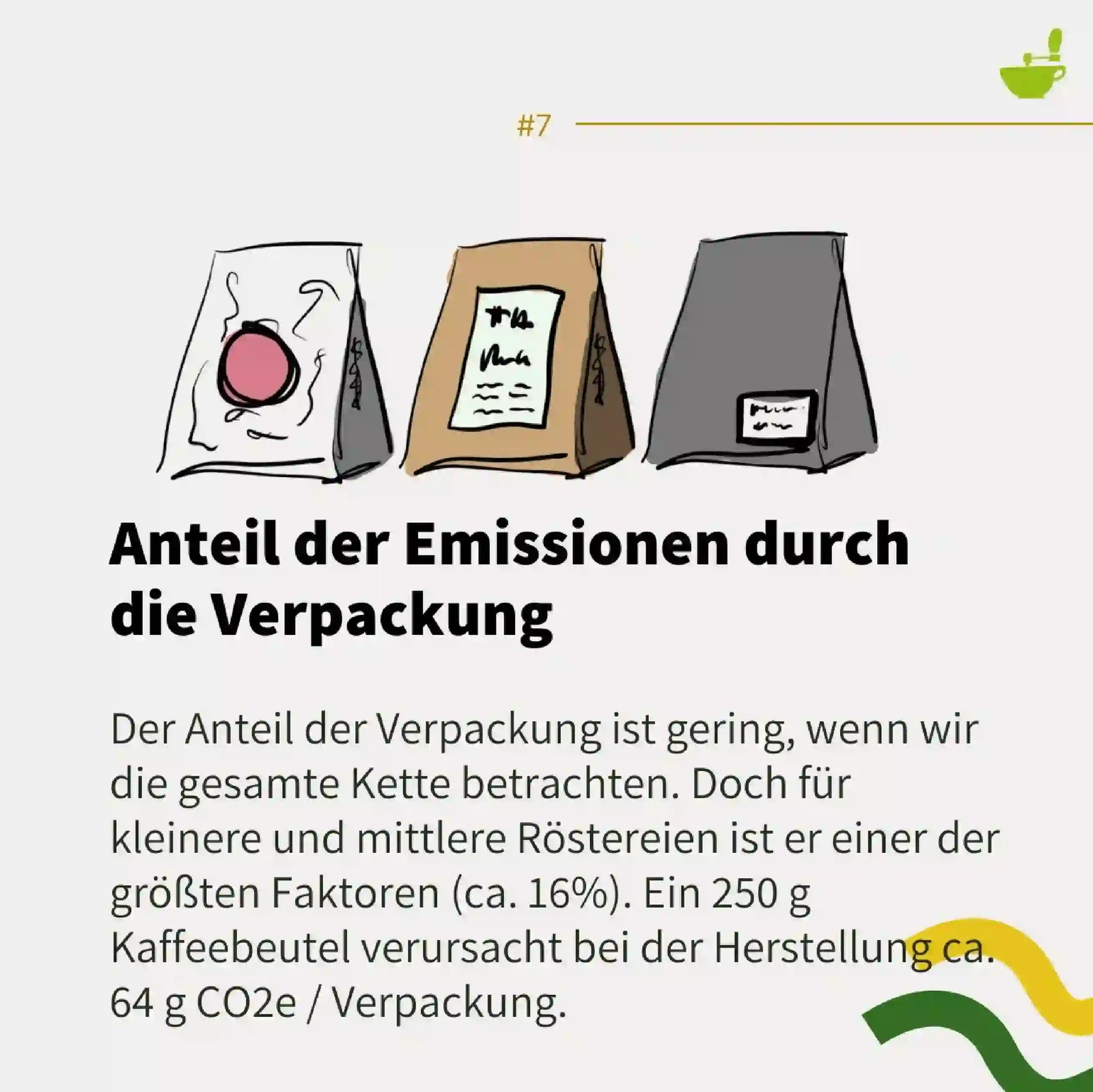

The CO₂ footprint of the preparation
The final step before consumption is preparation. Depending on the method, this also contributes significantly to emissions. This is despite the fact that our analysis does not take into account the manufacturing, disposal, and maintenance of the machinery.
It turns out that the way coffee is prepared has a significant impact on emissions. In addition to the method, the electricity mix used to power the coffee makers is crucial.
The data for the results is based on the energy measurements we take for each machine for the test videos.
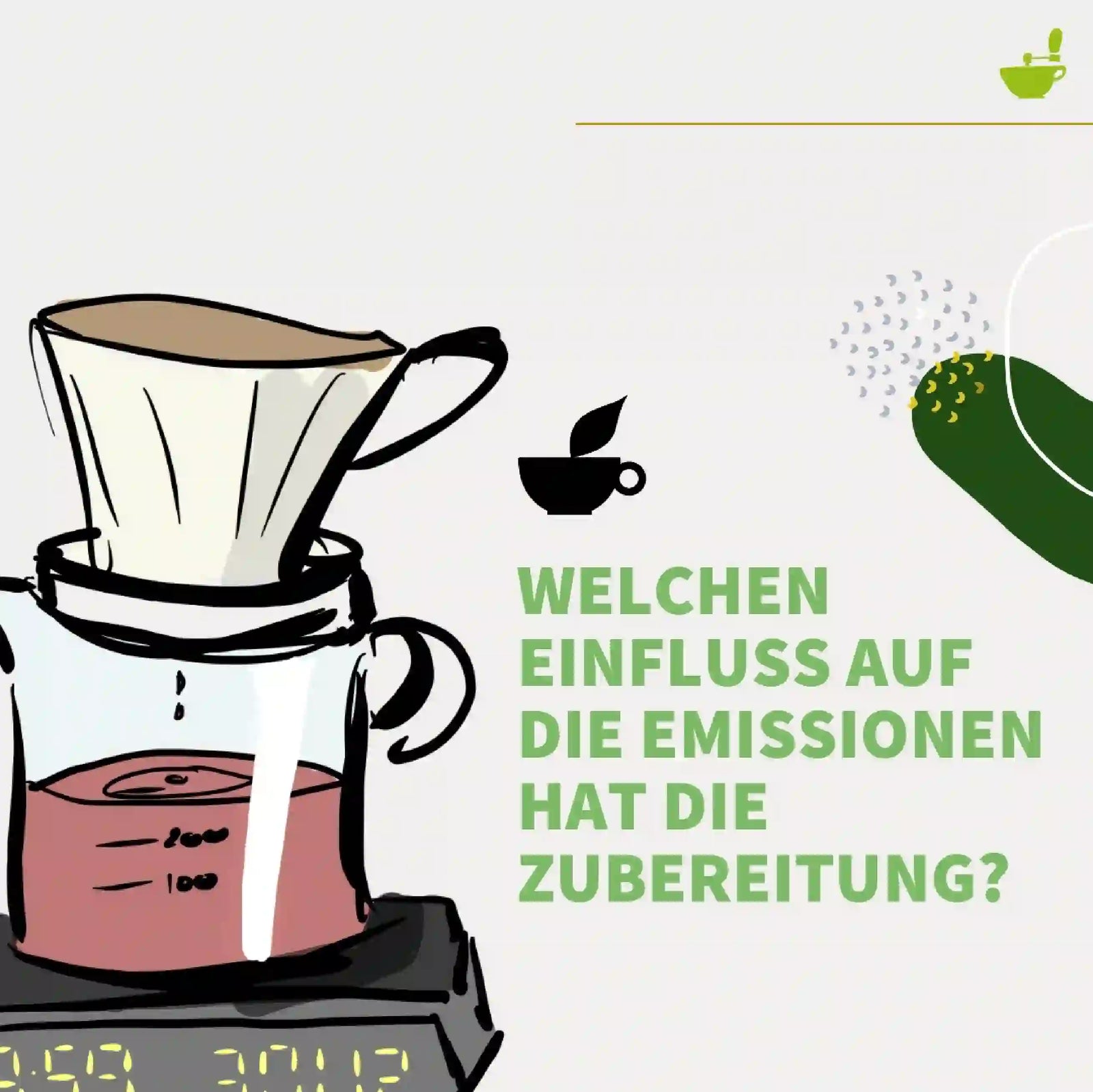
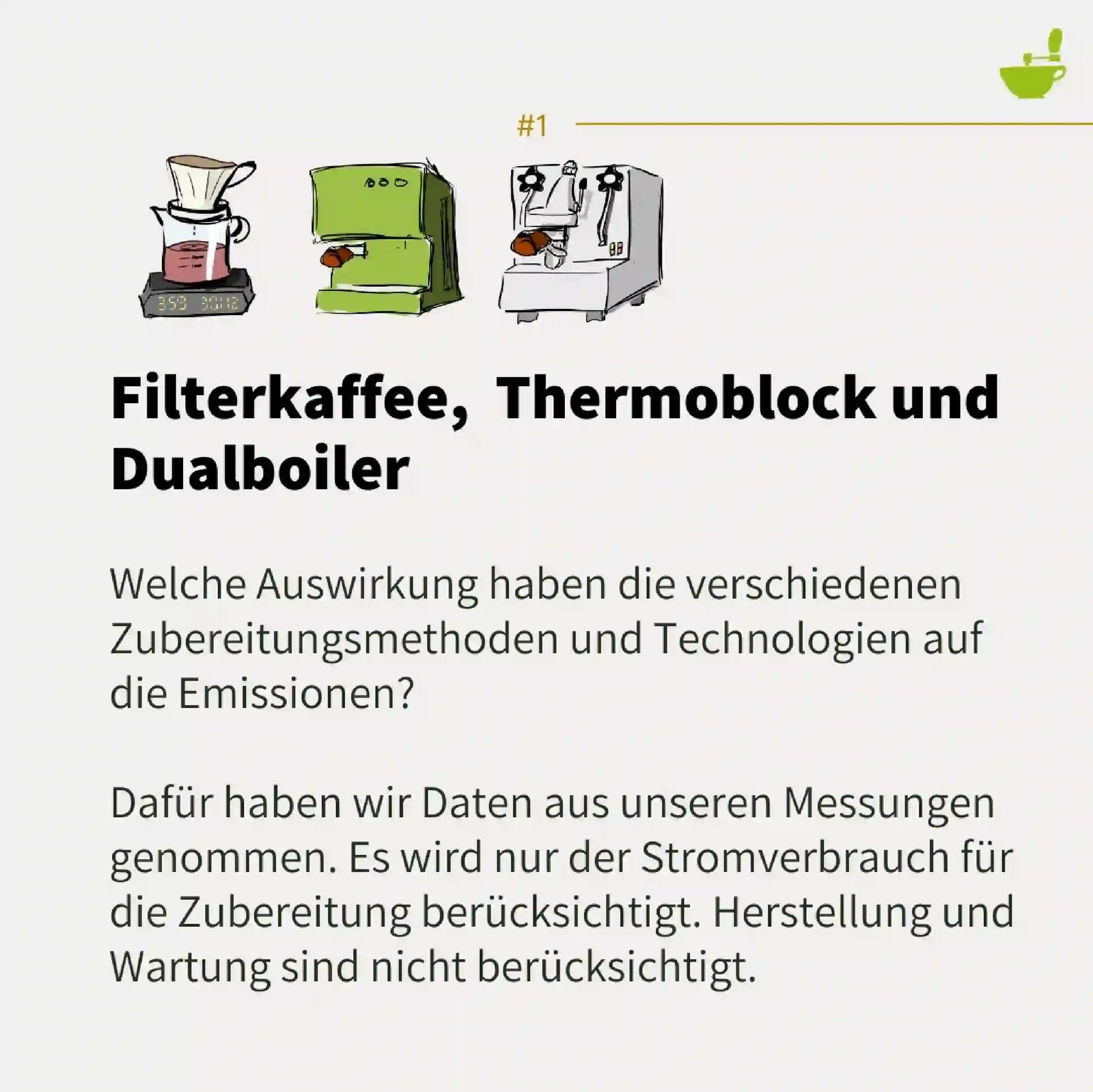
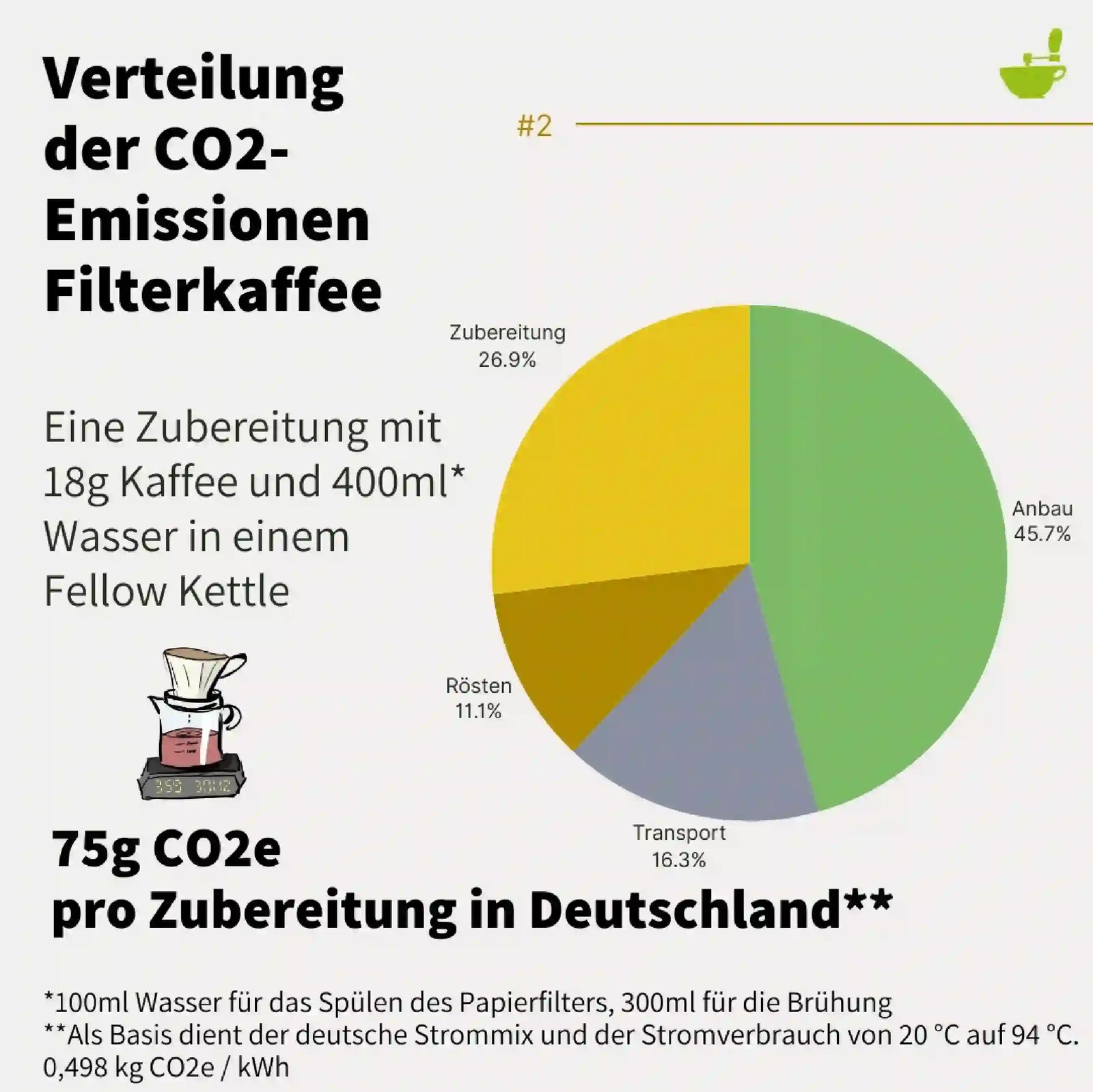
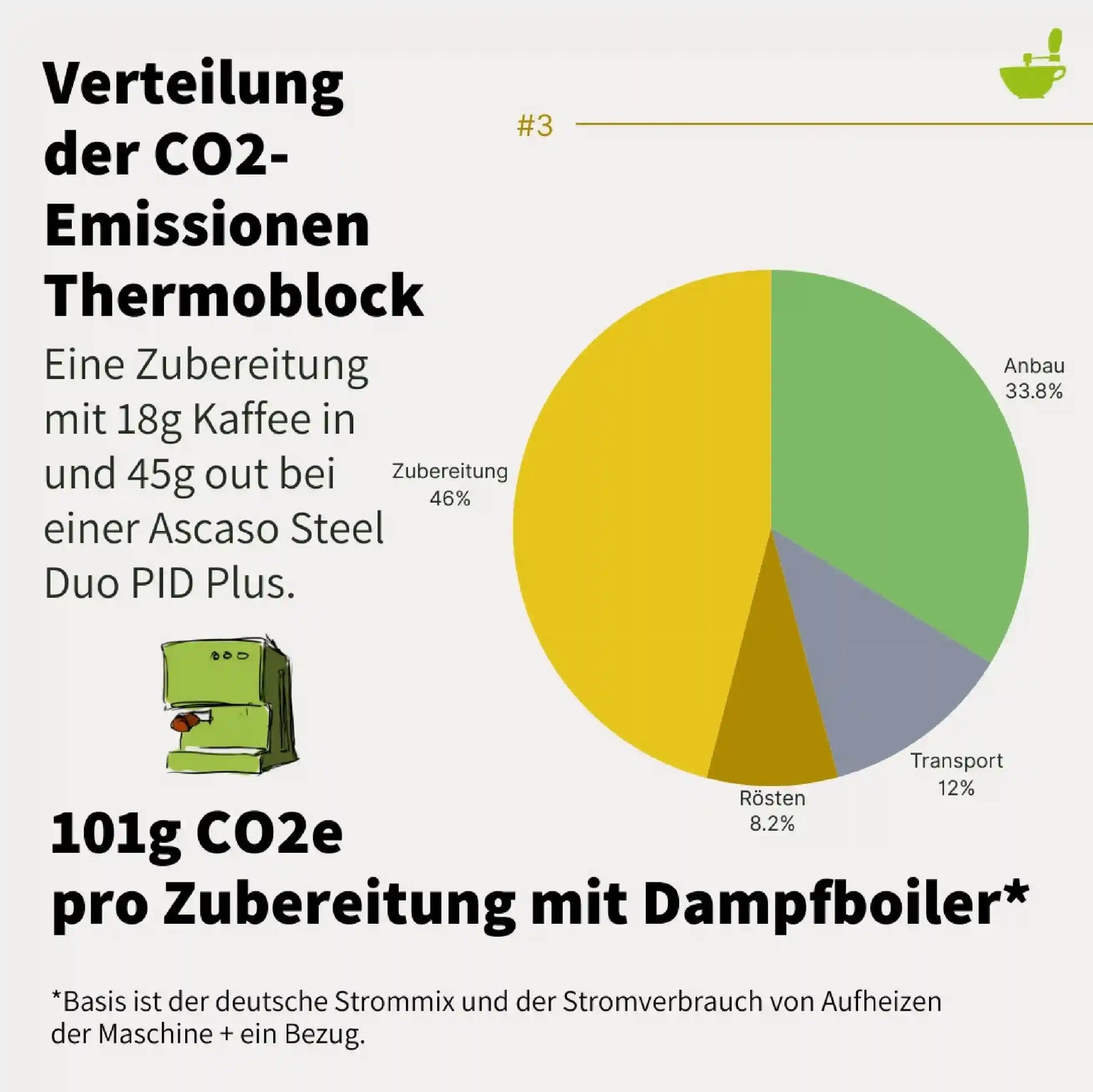
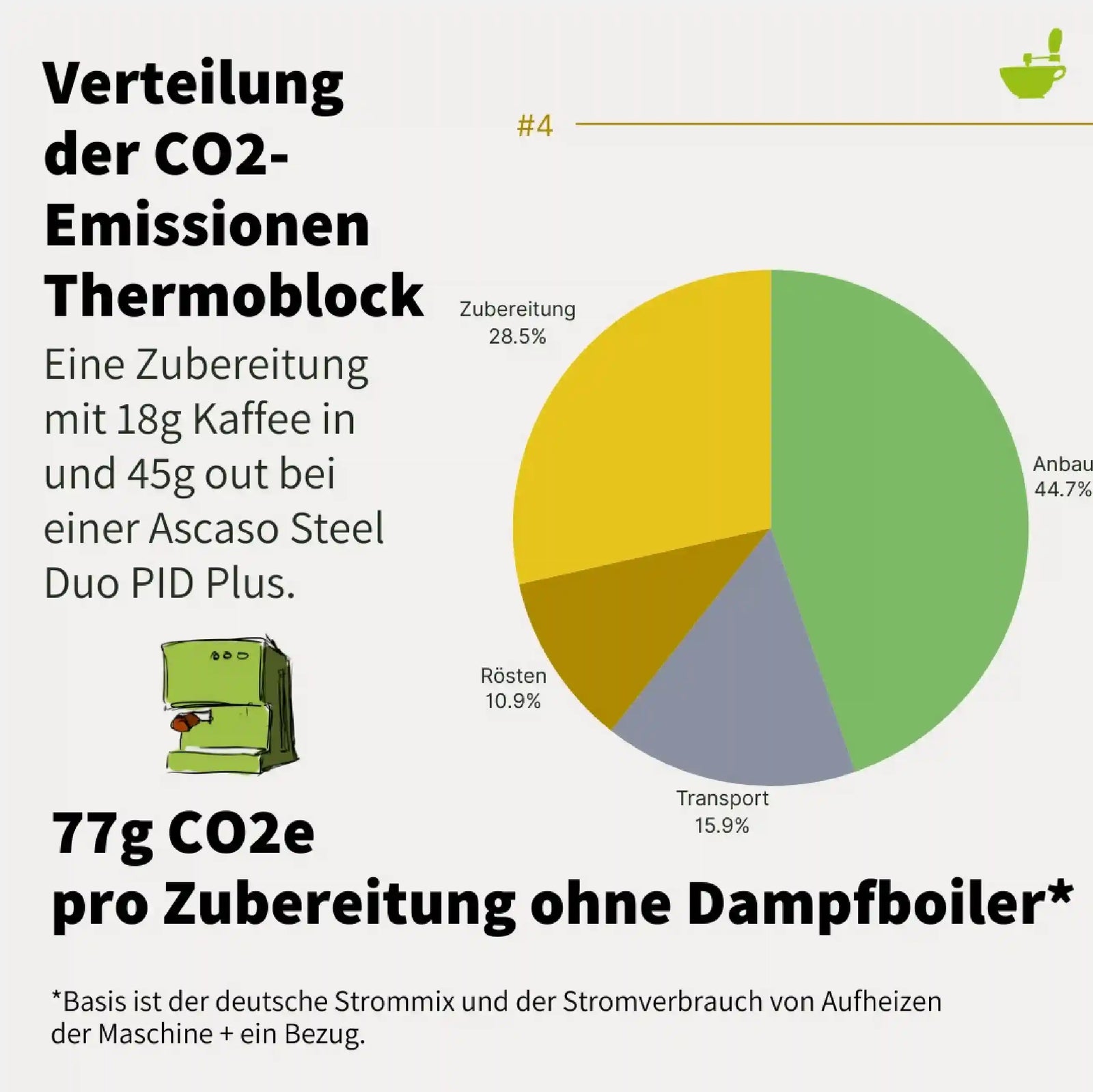
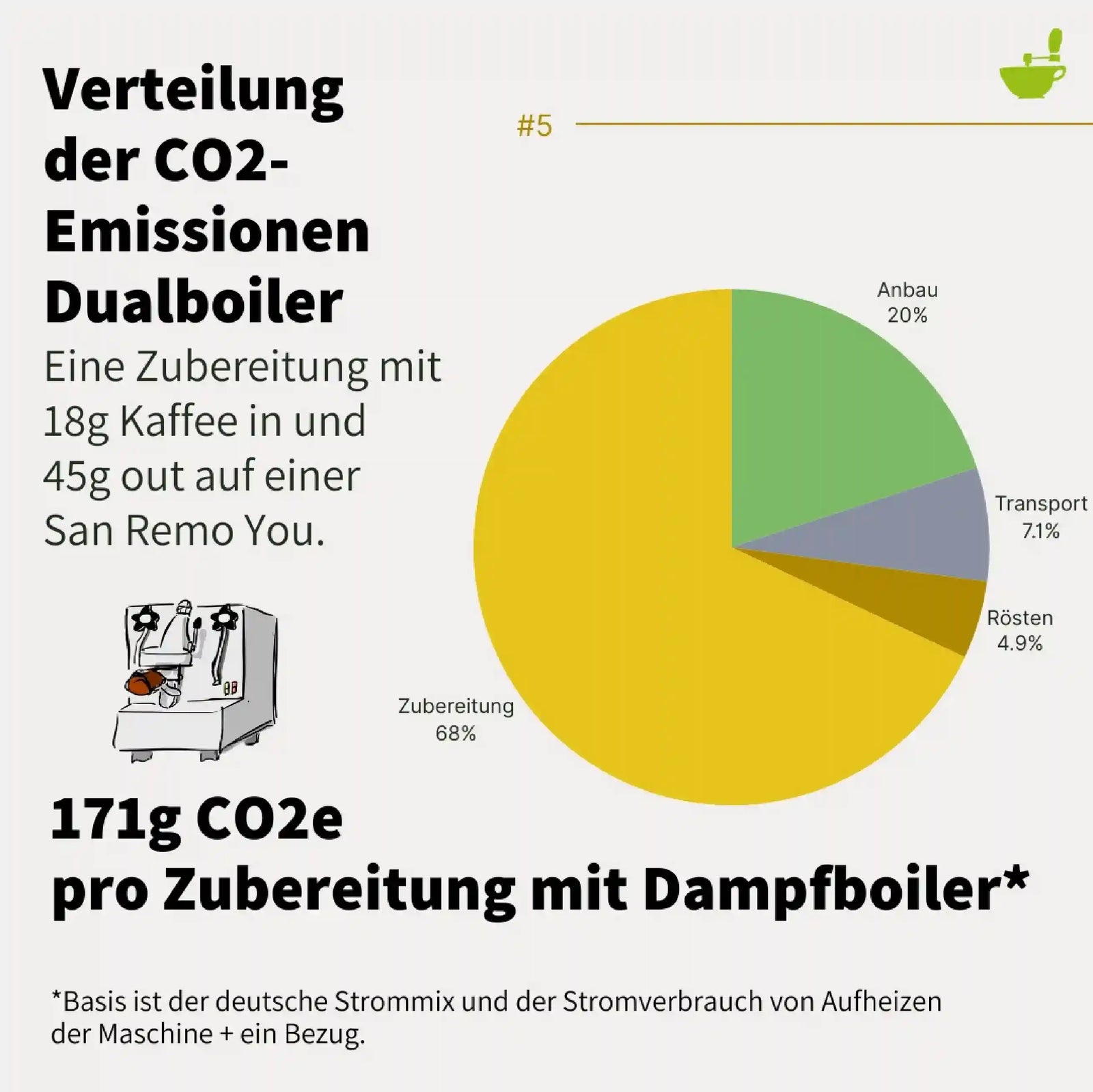
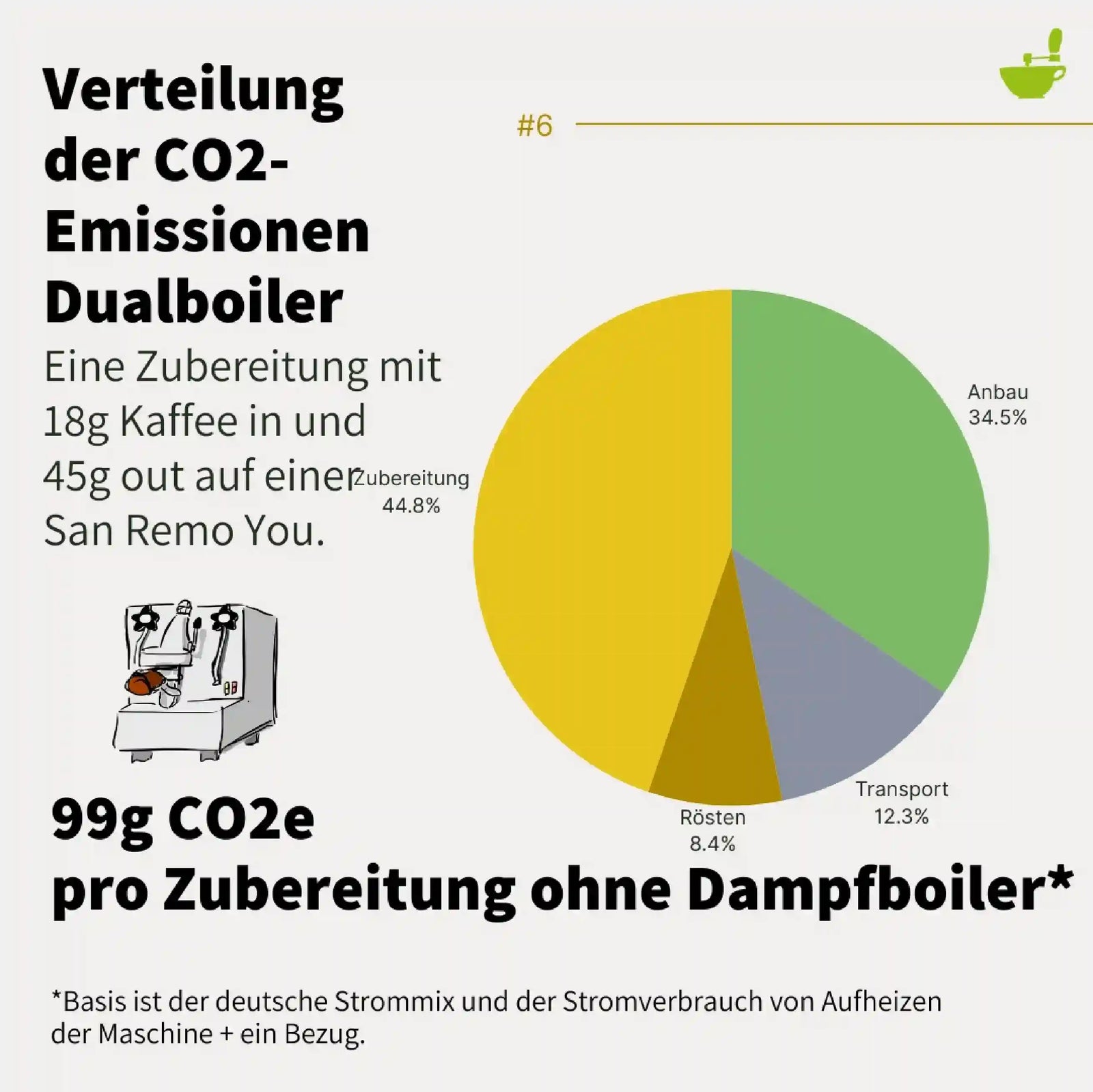
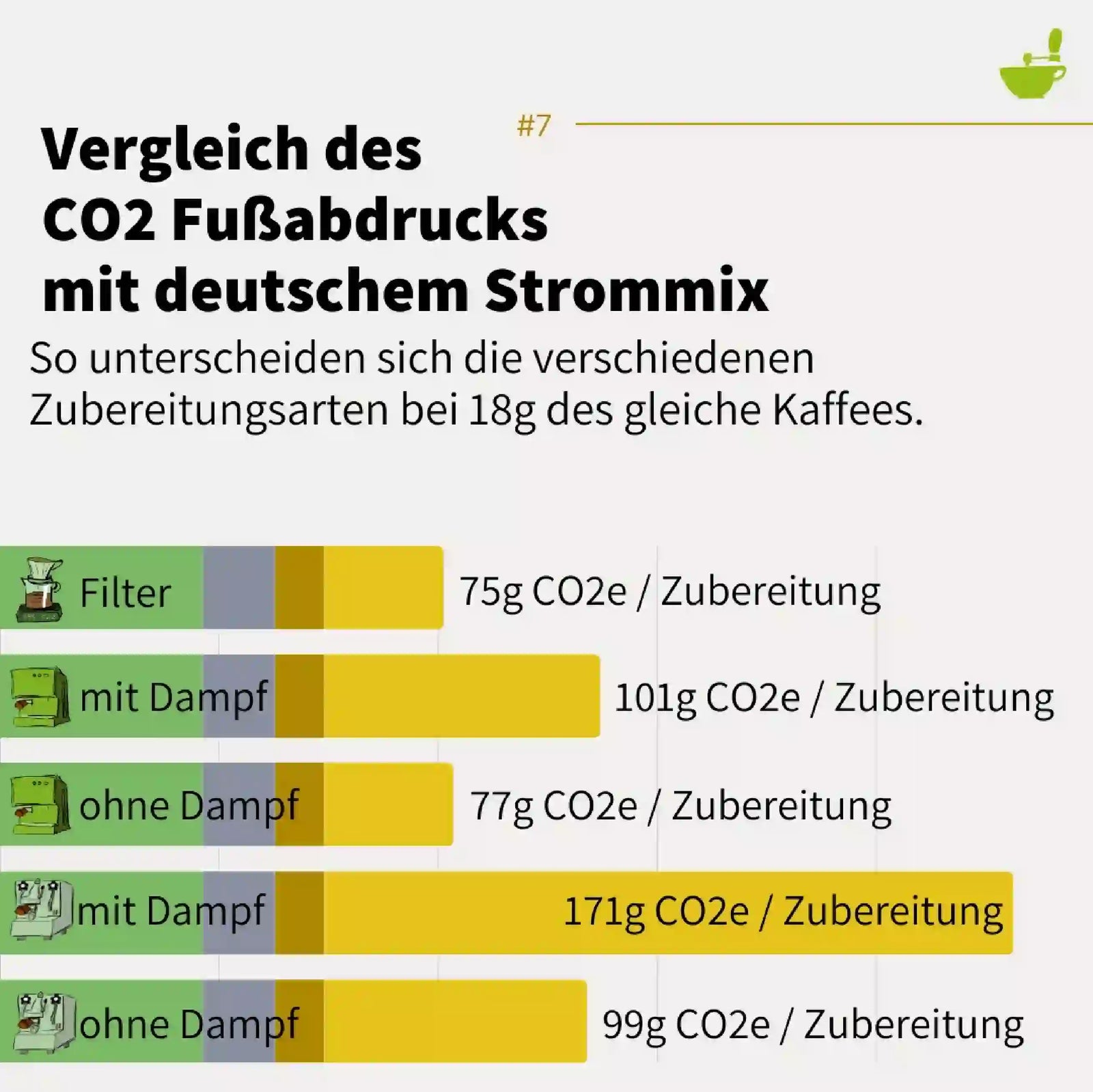
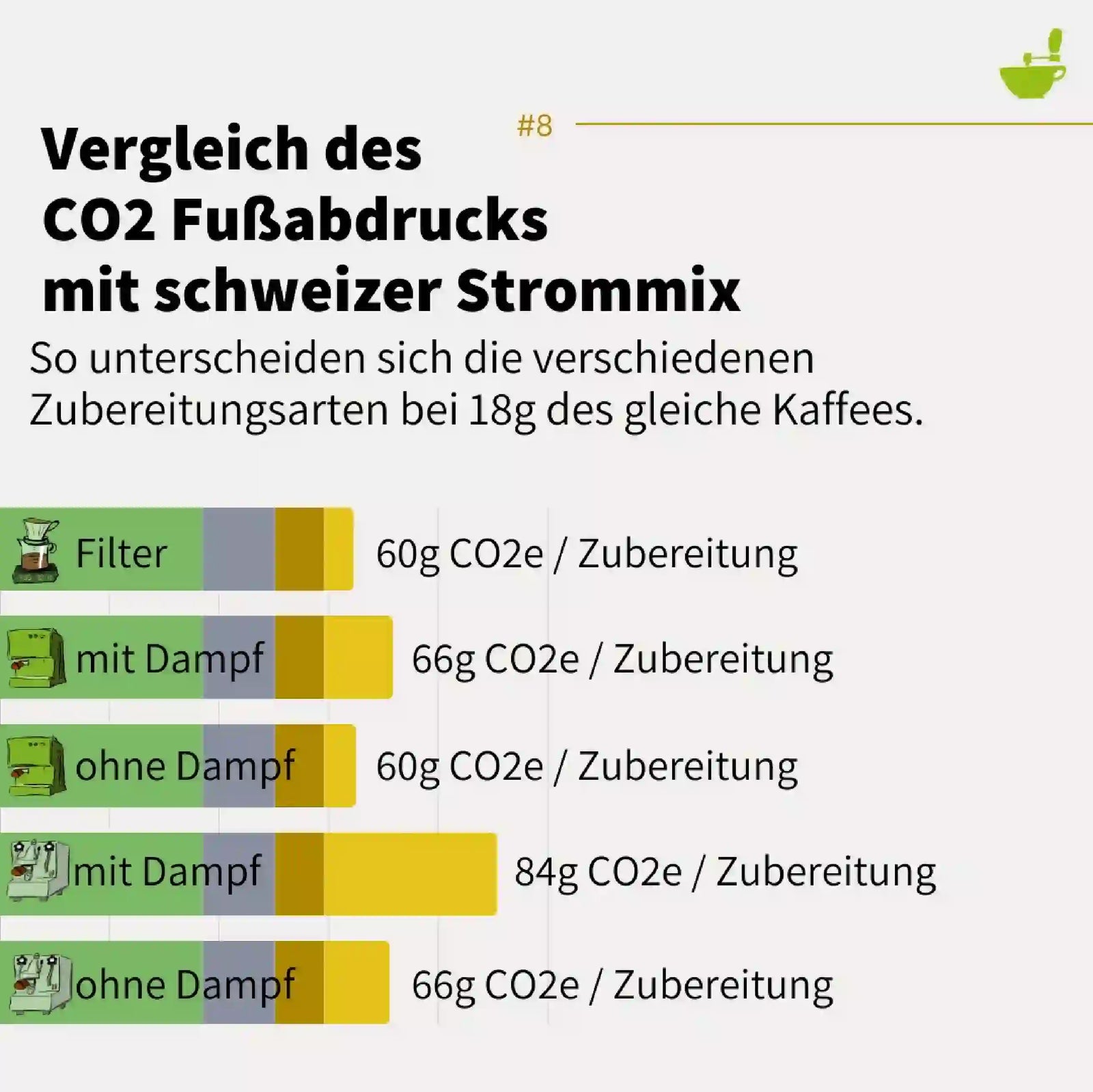

Are coffee capsules sustainable?
A discussion that is often conducted with passion. How do coffee capsules perform? Our analysis is based on one preparation method: a double espresso from a portafilter machine, 280 ml of filter coffee, or simply a beverage from a capsule.
Preparing coffee from a capsule performs better than the other preparation methods. This is due to the small amount of coffee required for each preparation. However, this only applies if the same coffee is used for each preparation method.
The same applies to capsules: pay particular attention to the coffee in the capsules.
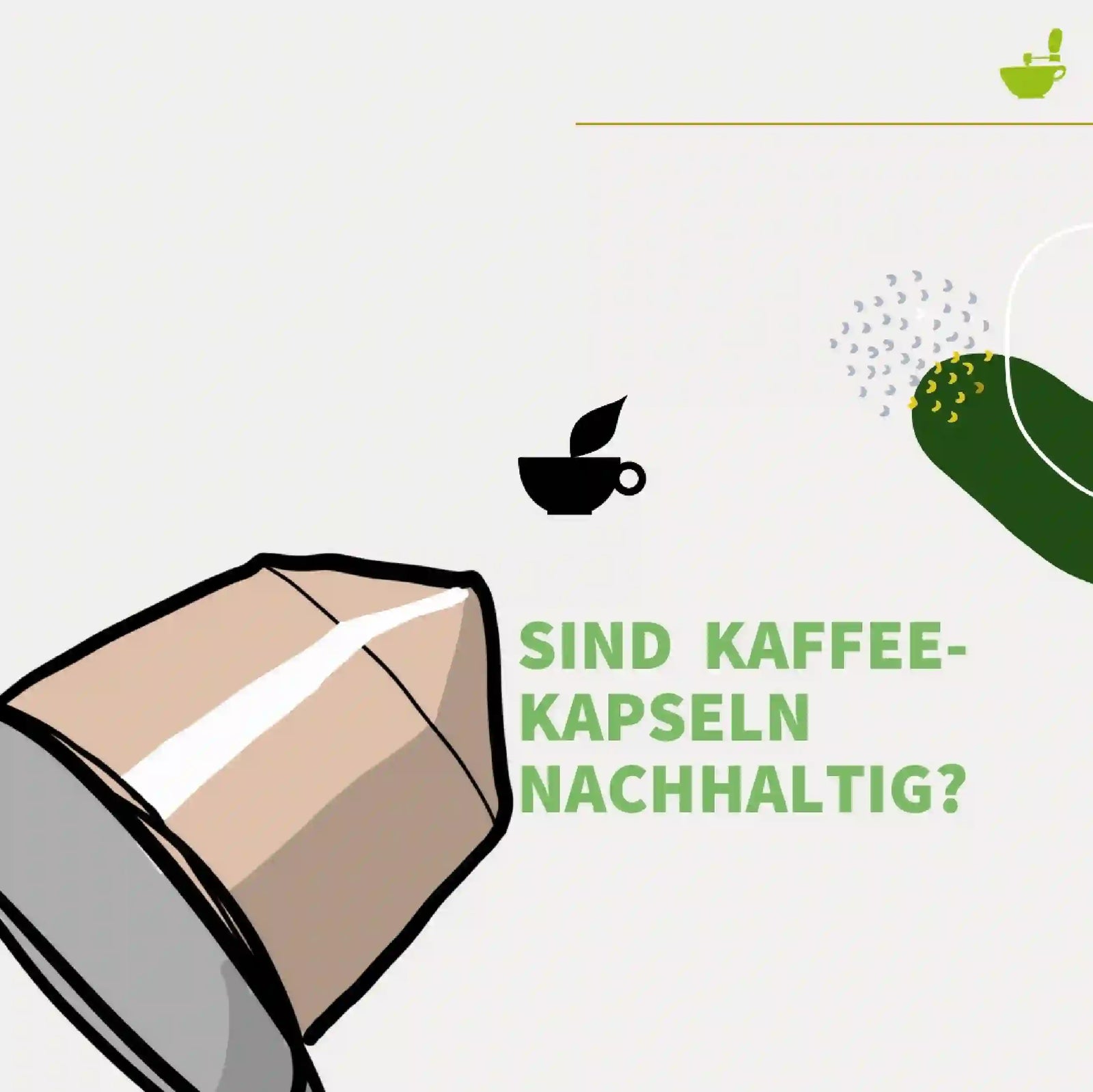
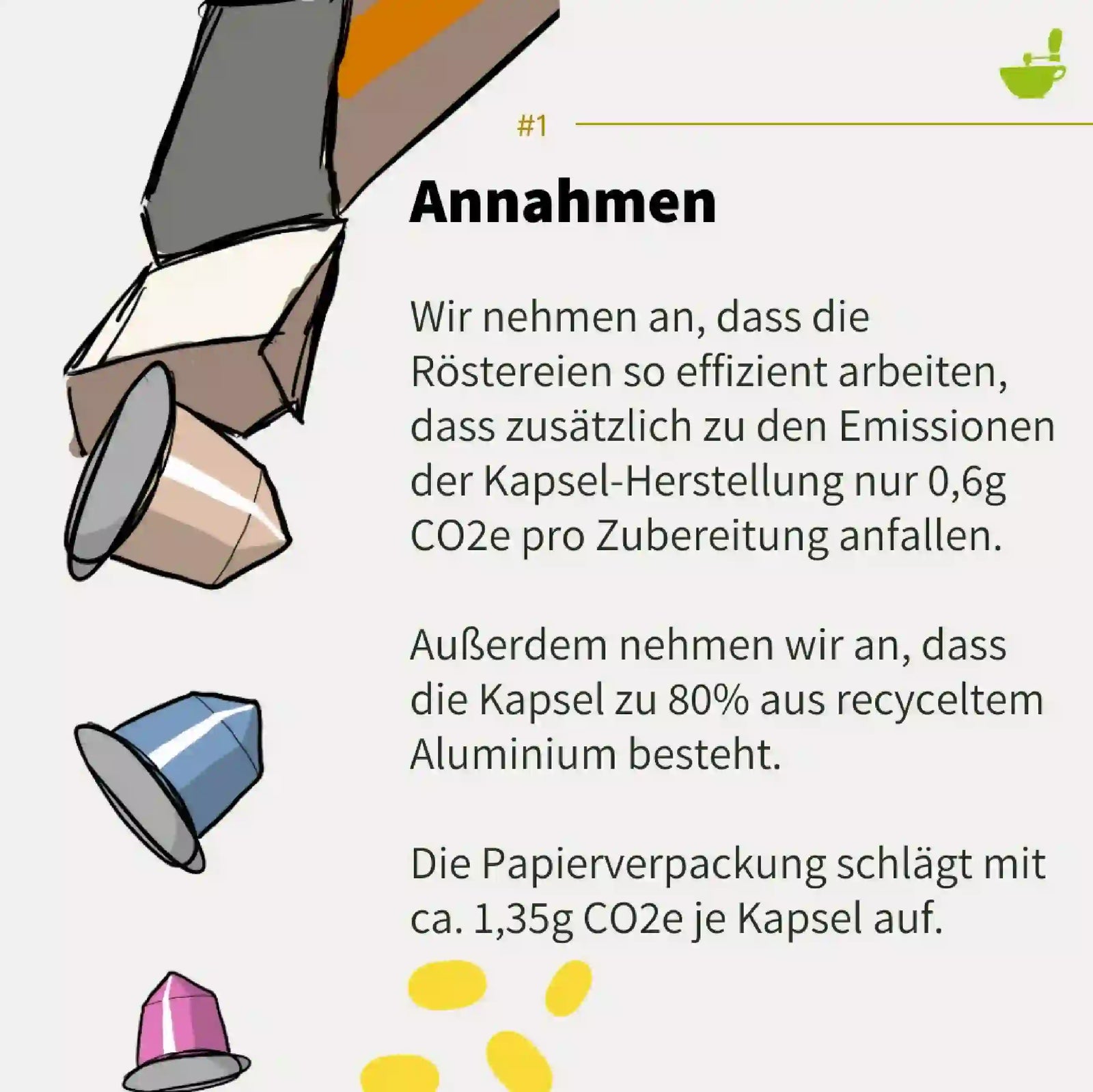
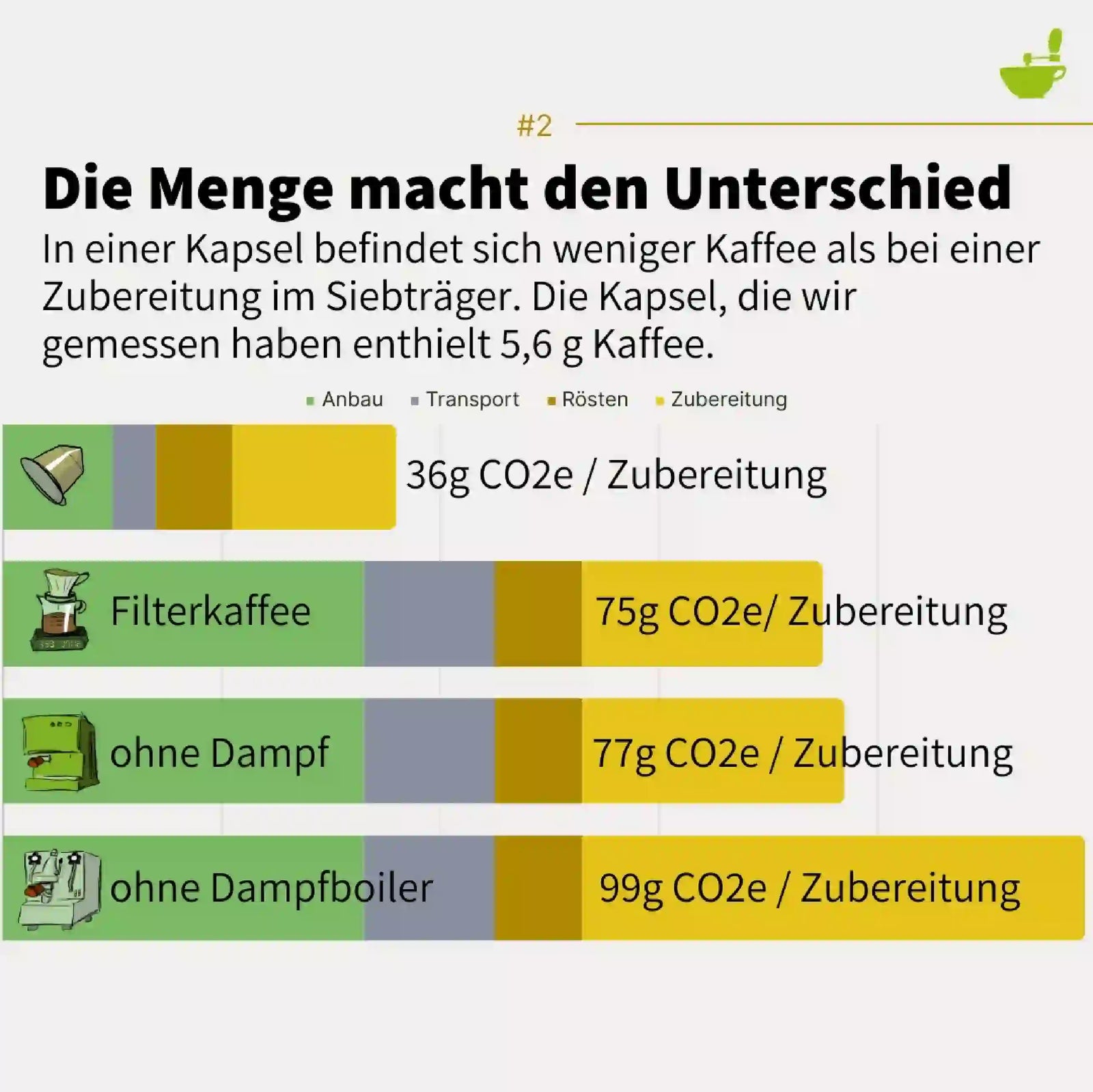
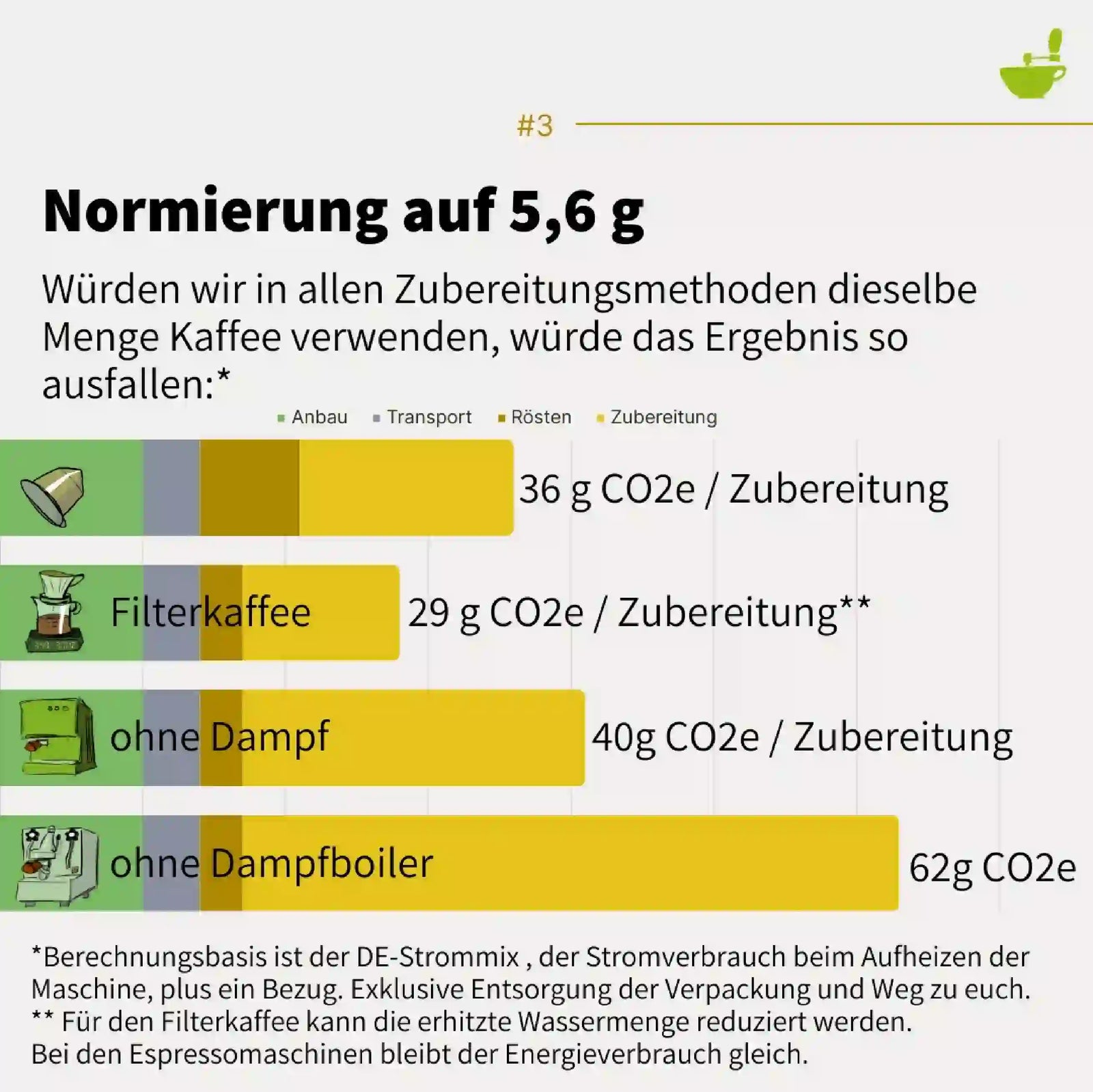
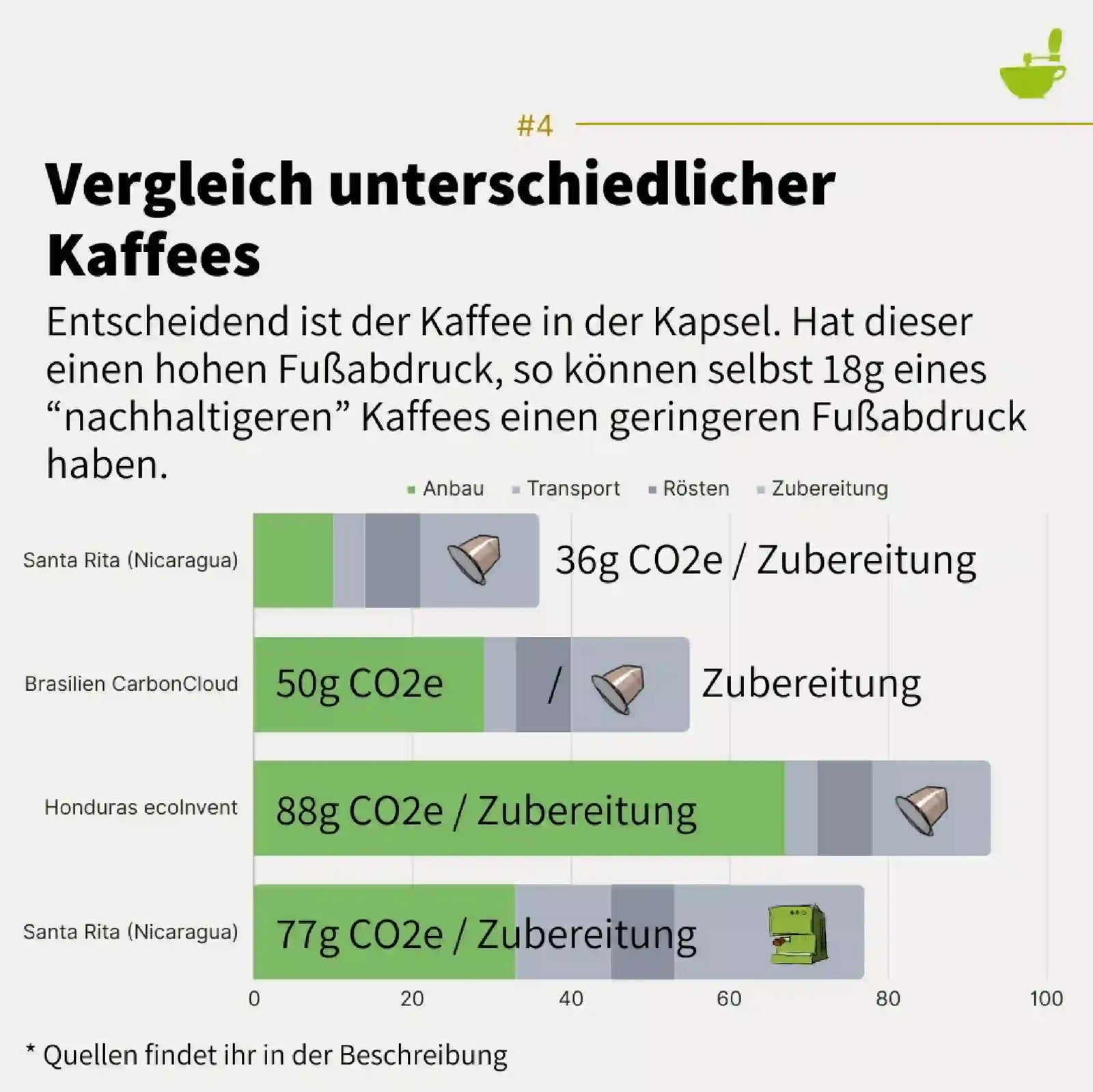
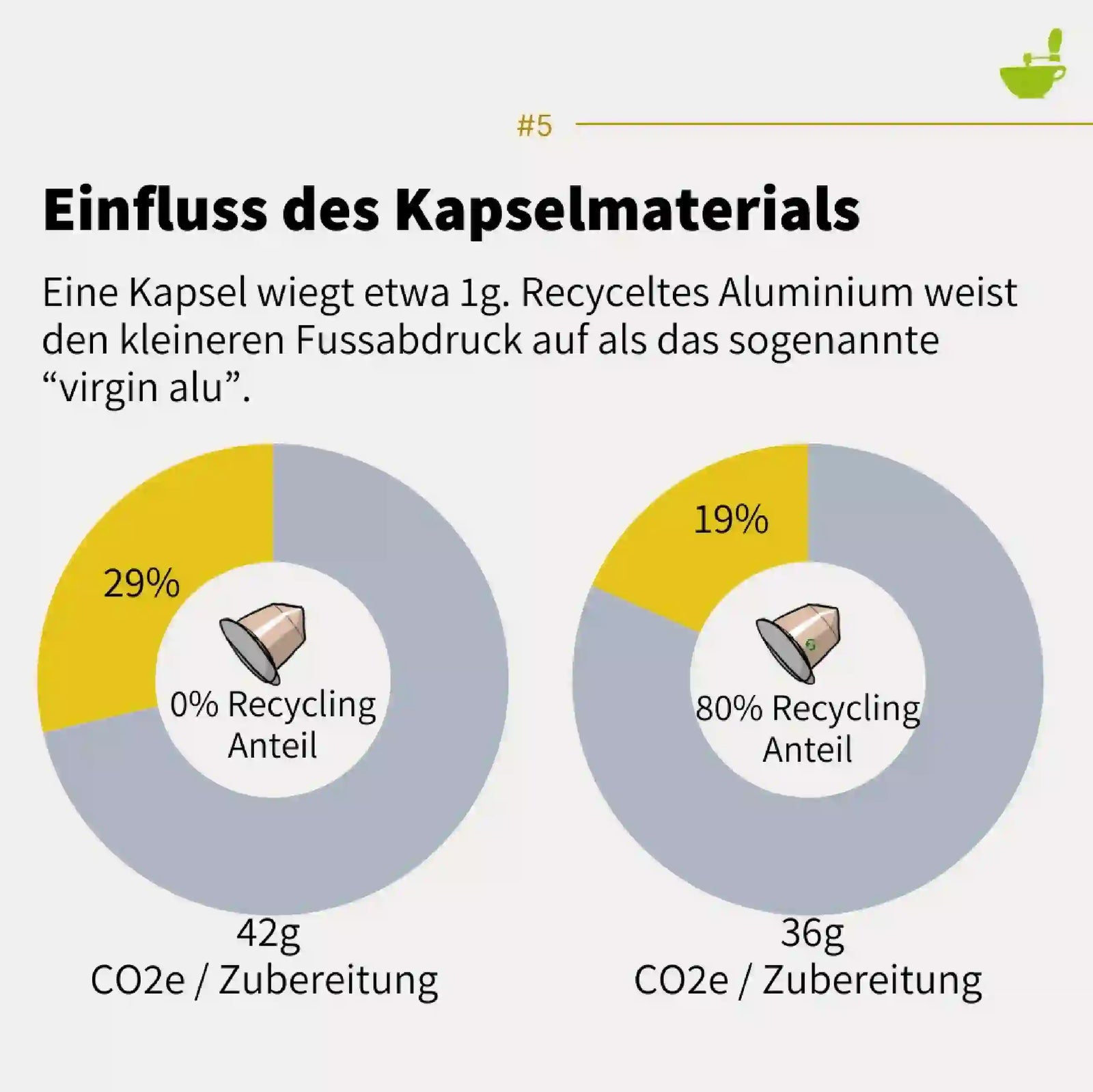
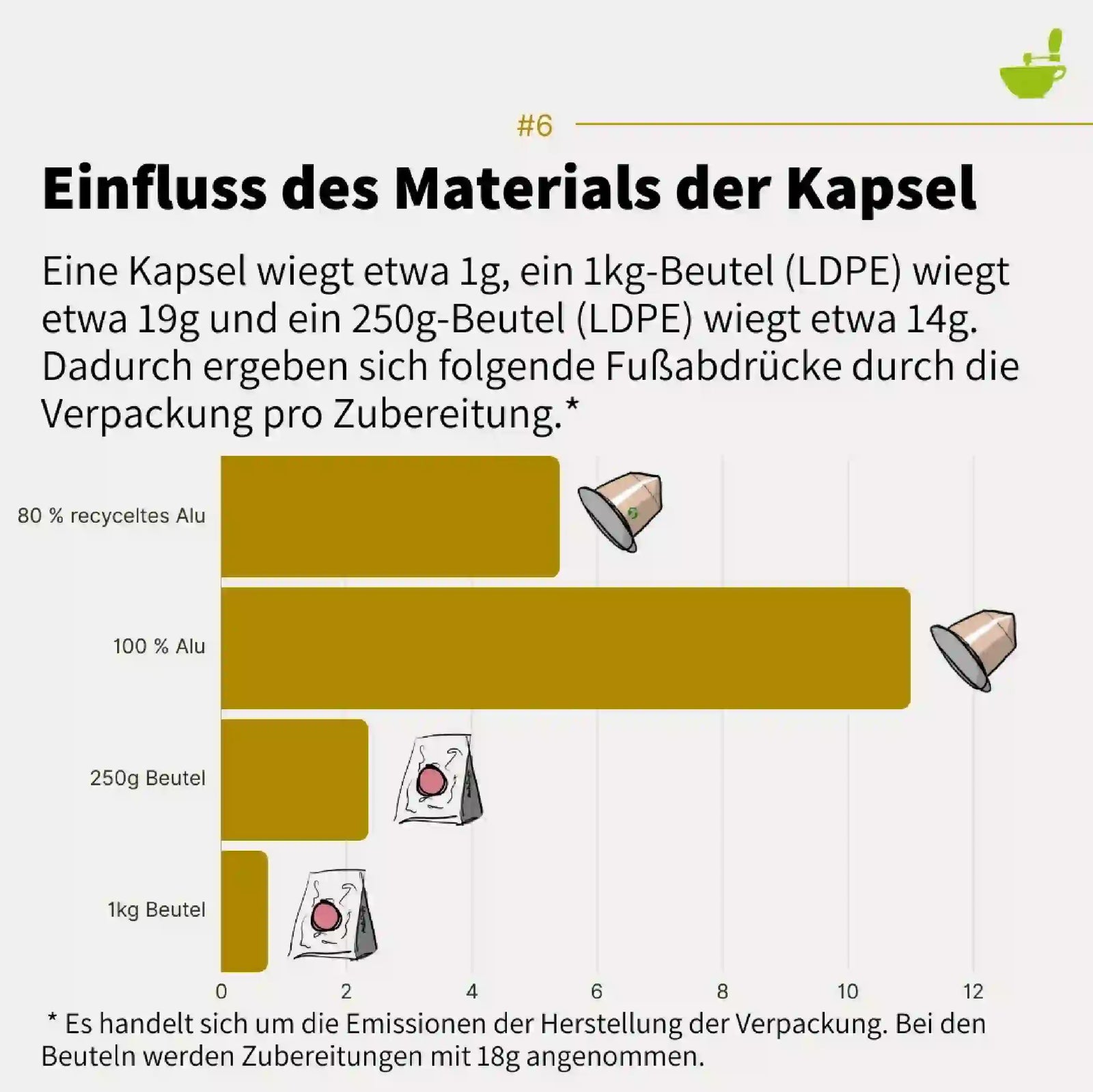
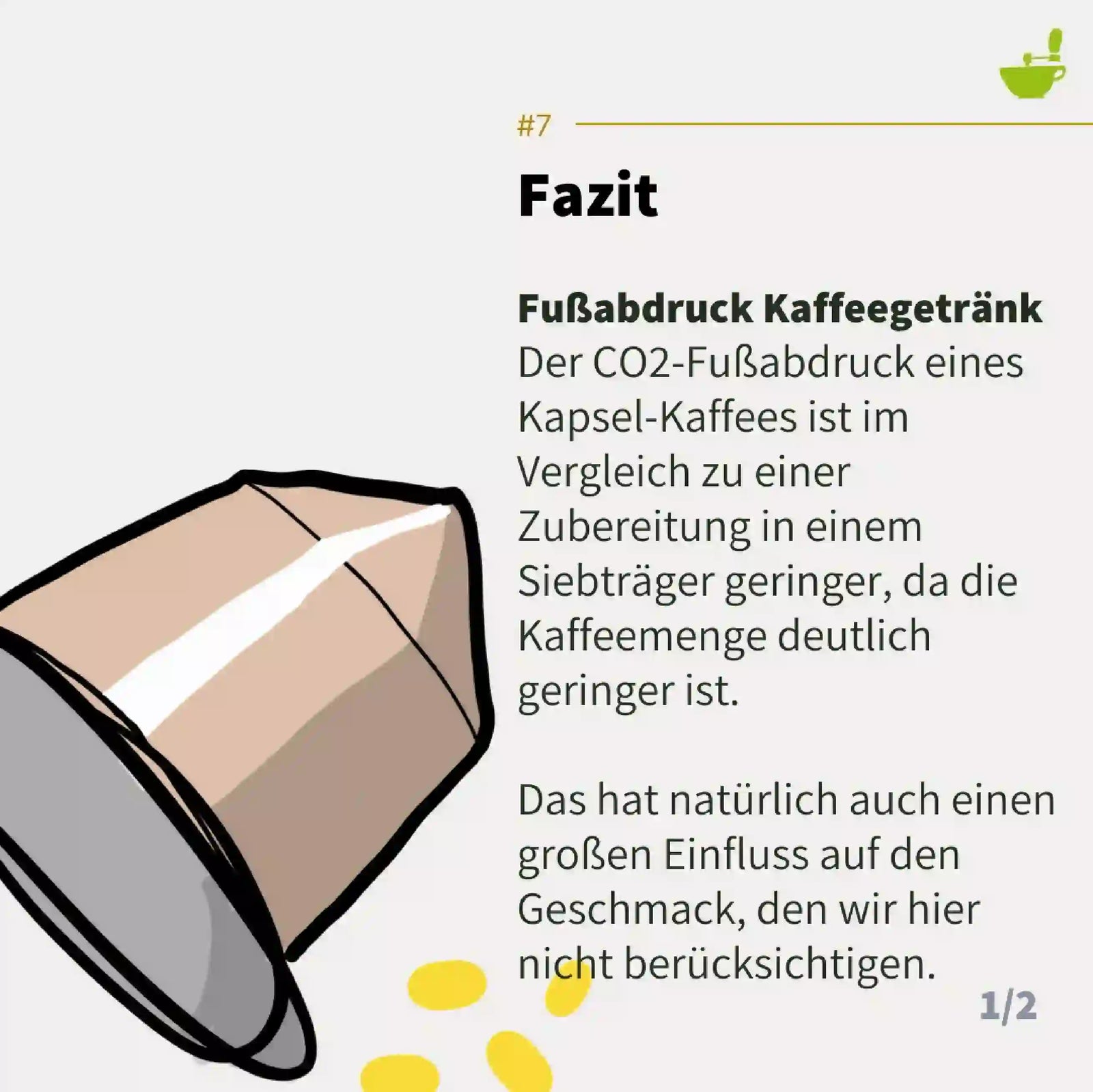
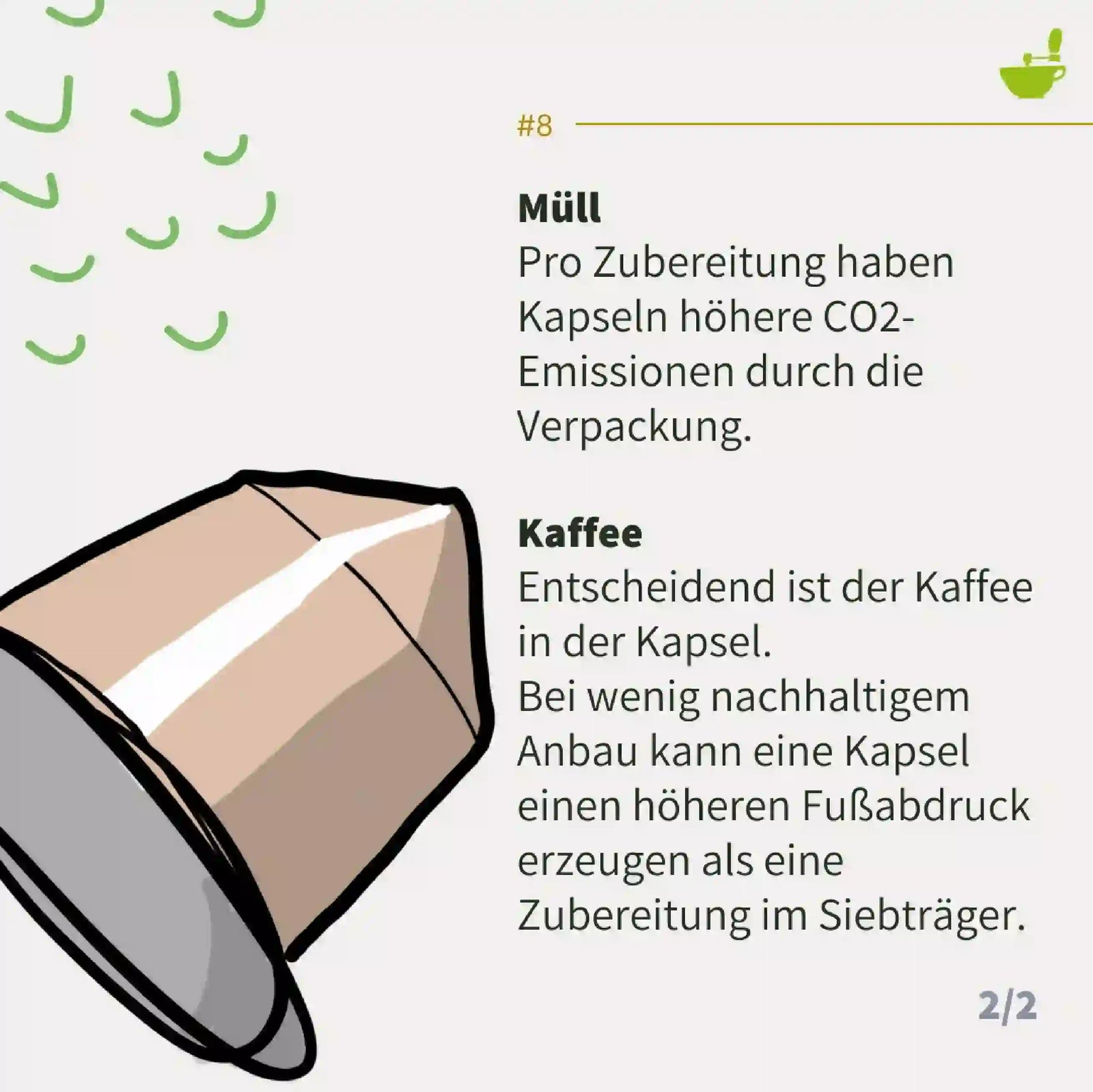
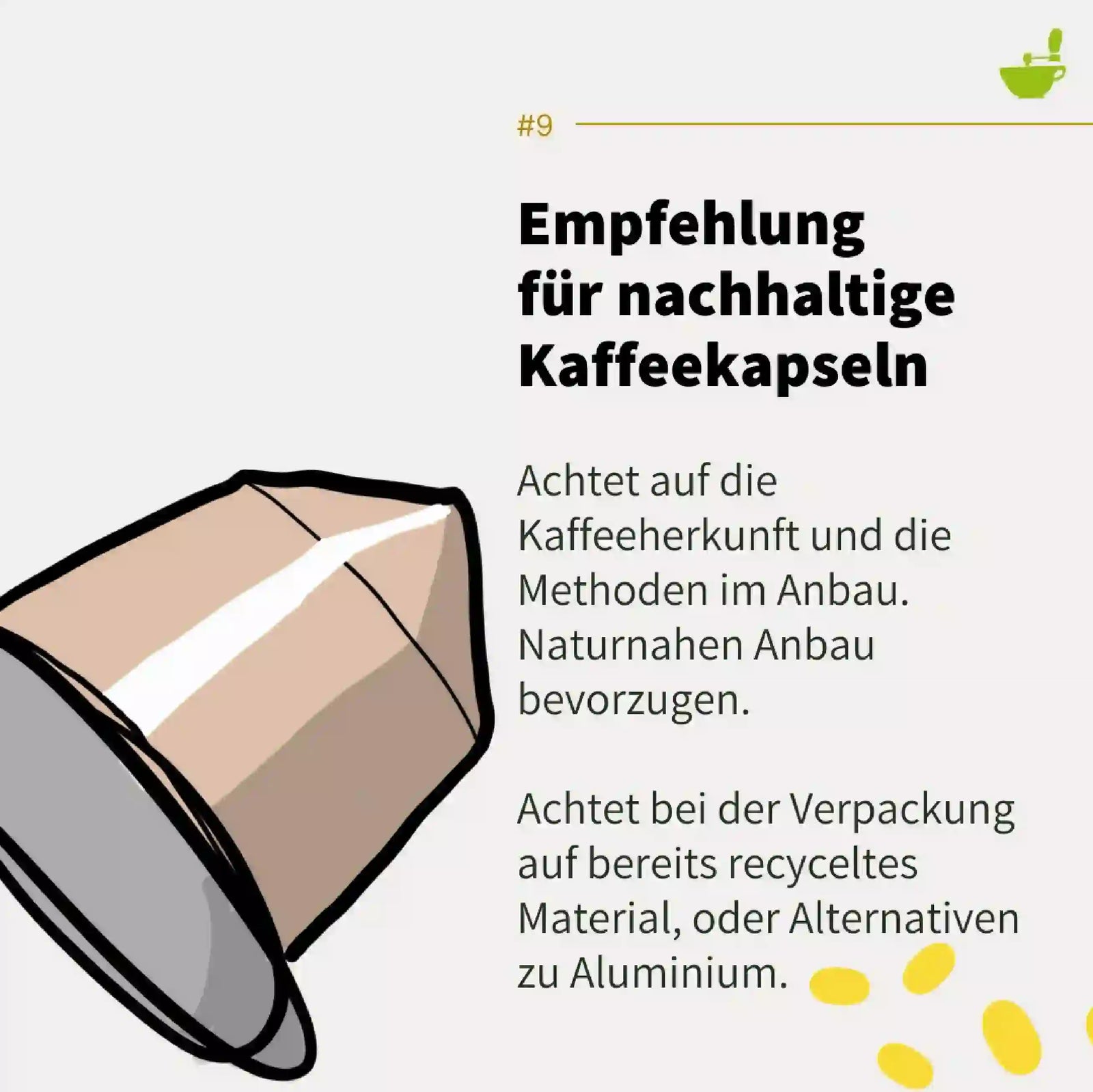
Will there still be coffee in 2050?
Yes, but: many things will change, not least the taste: there will be fewer exceptional coffees, and more coffees will taste like “coffee.”
There are major challenges, but also opportunities - but exactly where and how climate change will have what impact is simply impossible to predict.
And because a coffee plant needs three years to produce a yield, the world can look different in the meantime.
Therefore: enjoy your coffee consciously.
